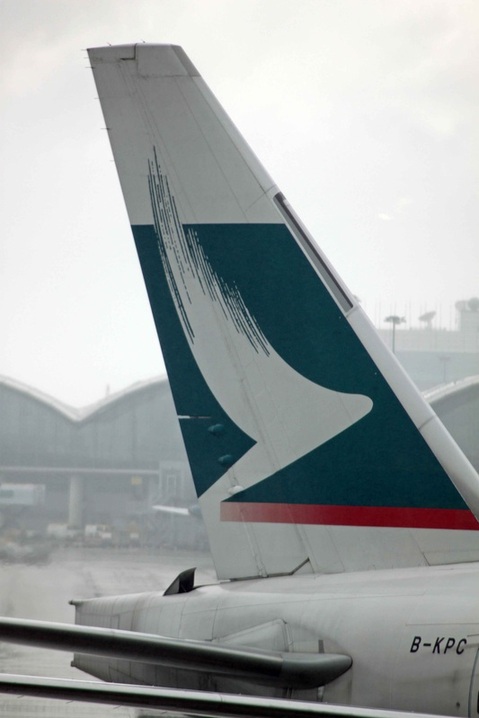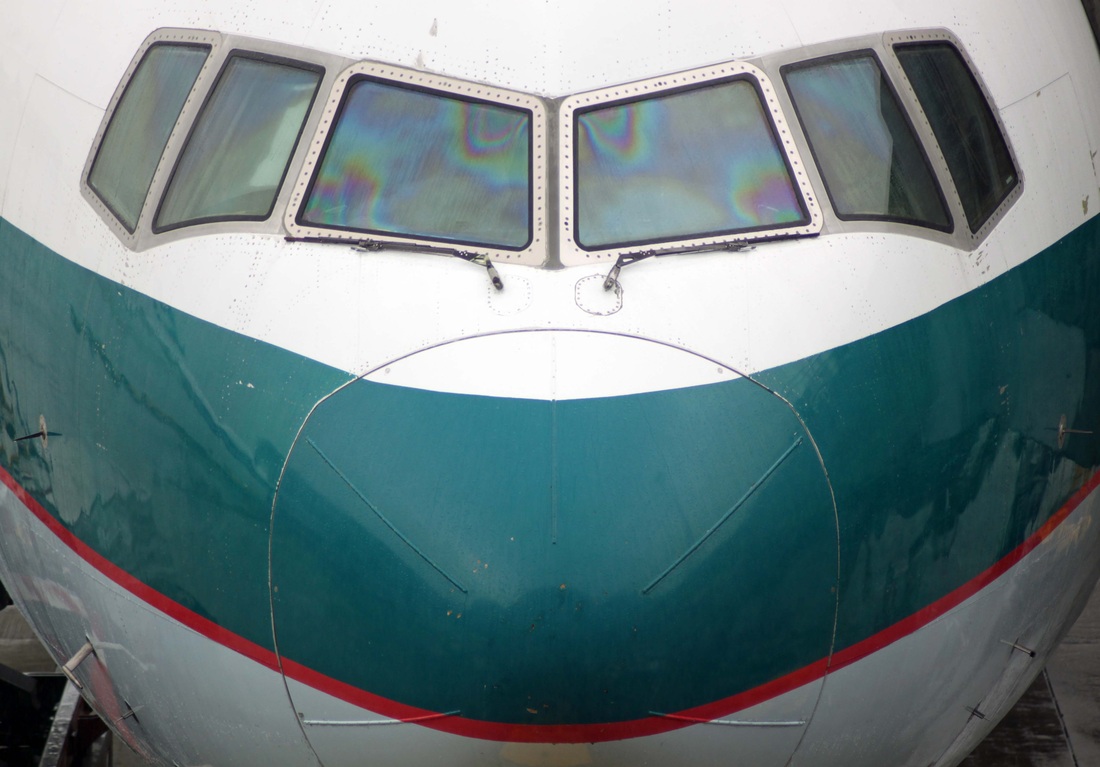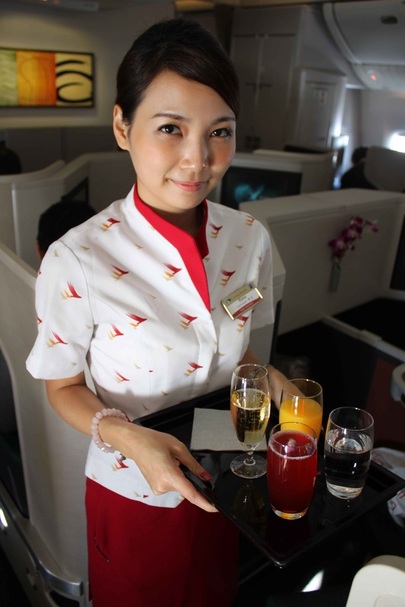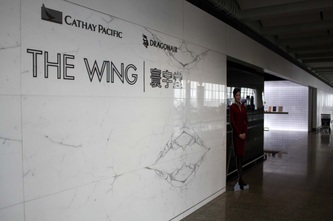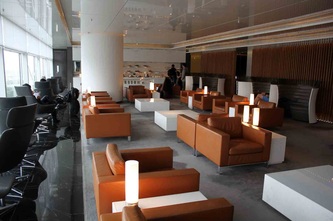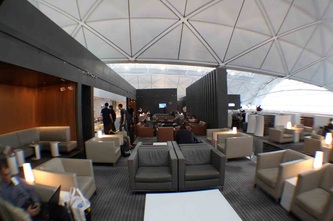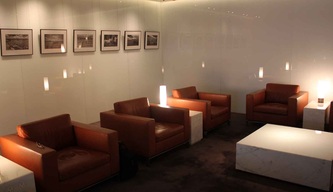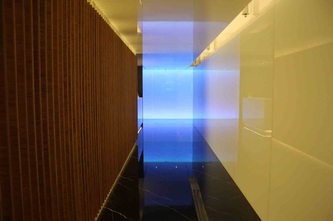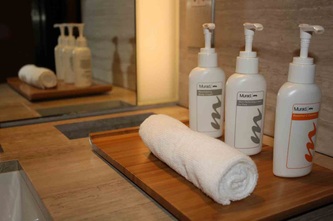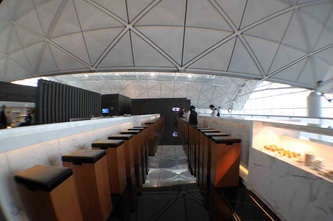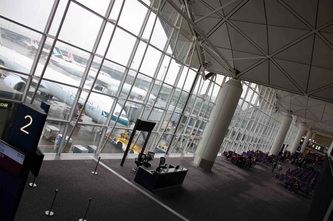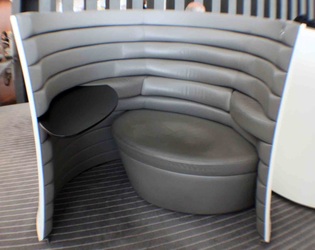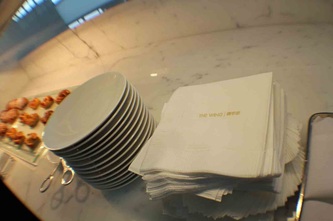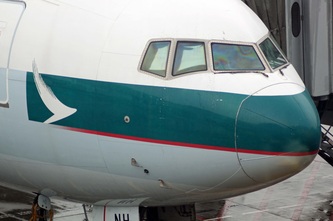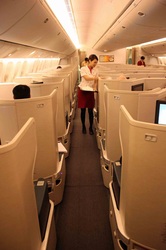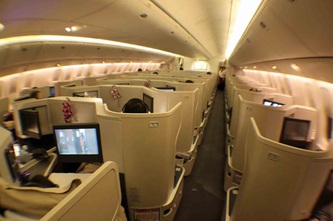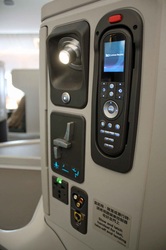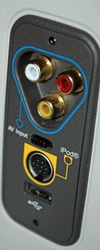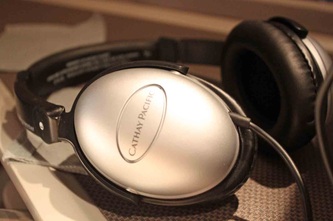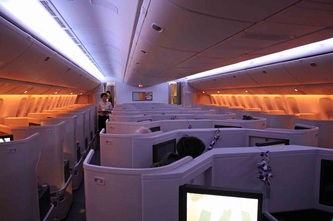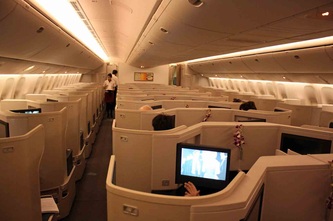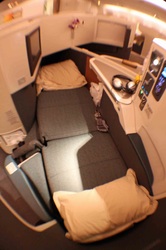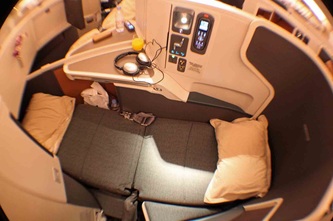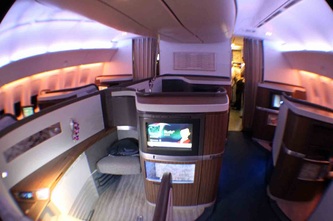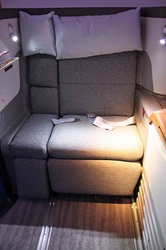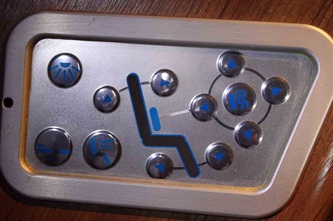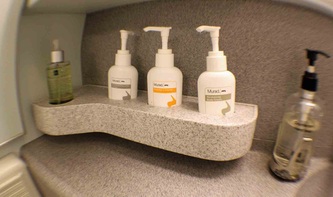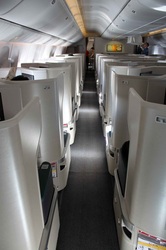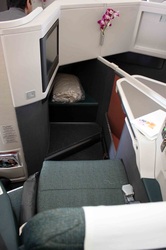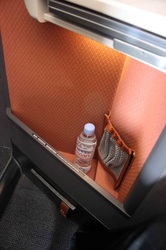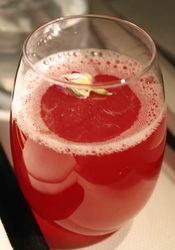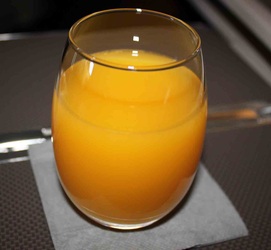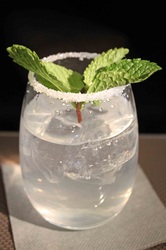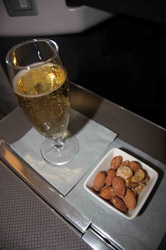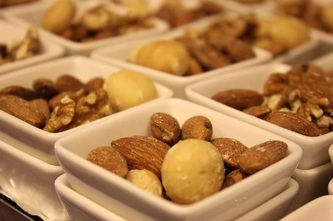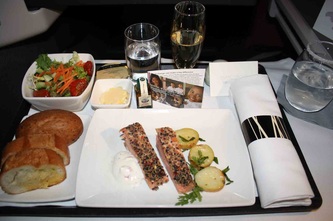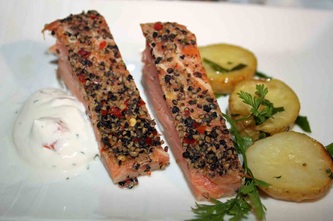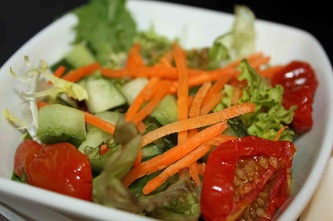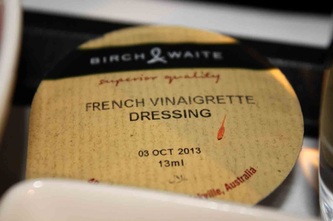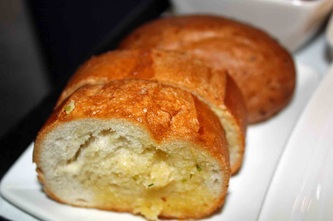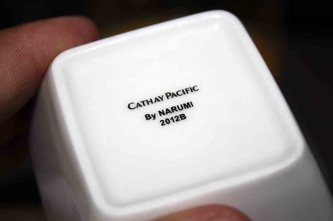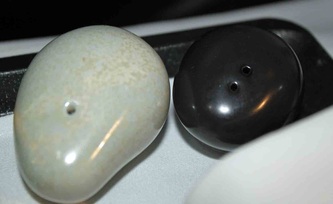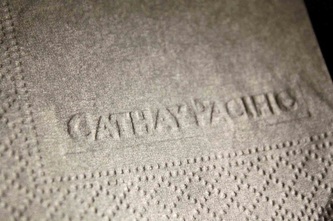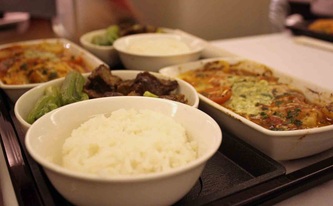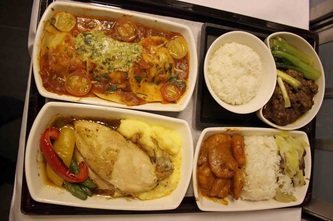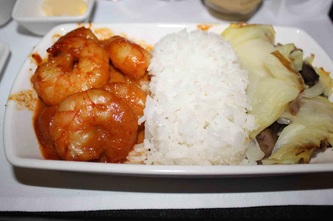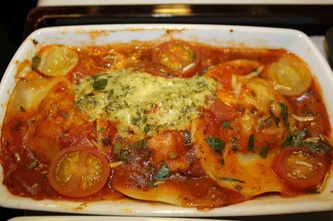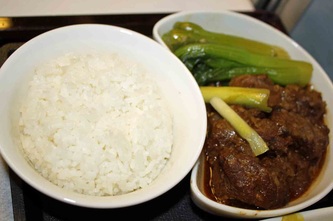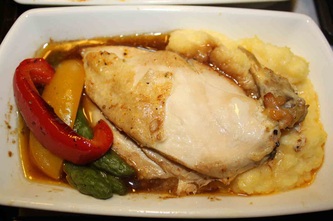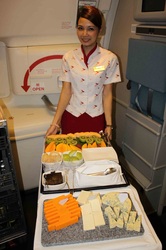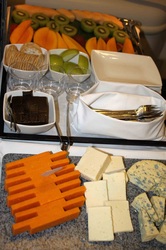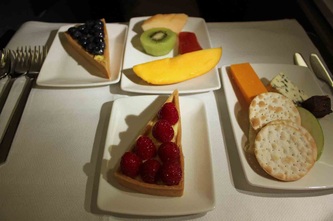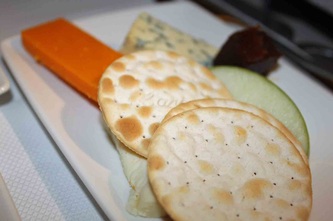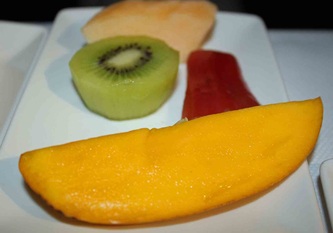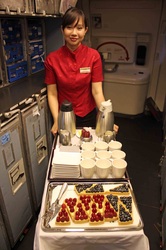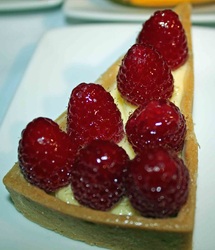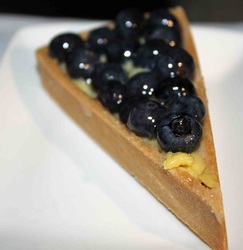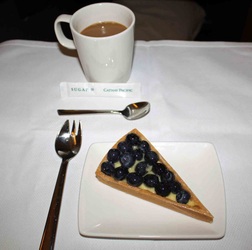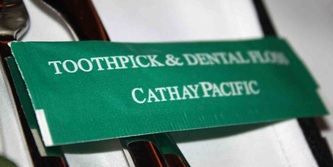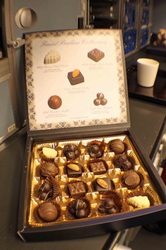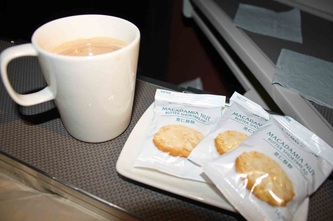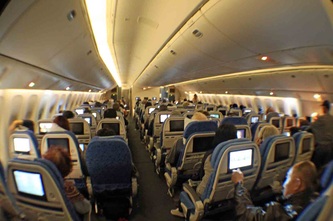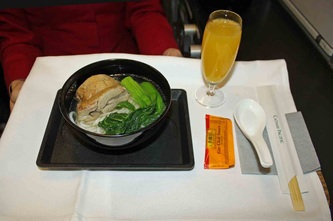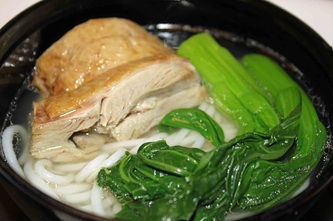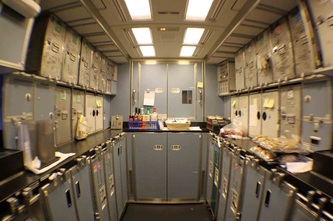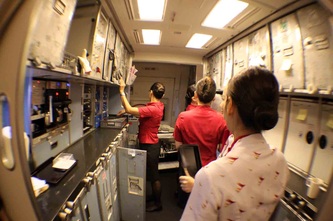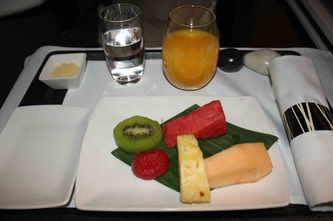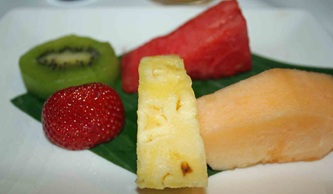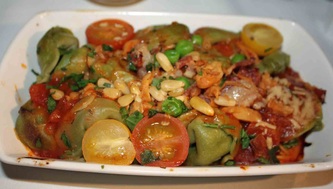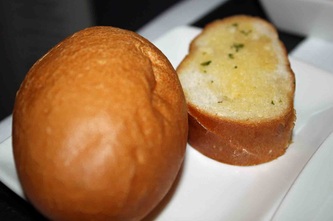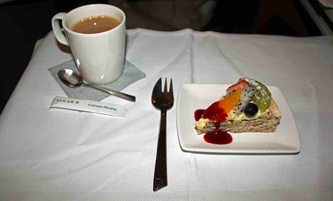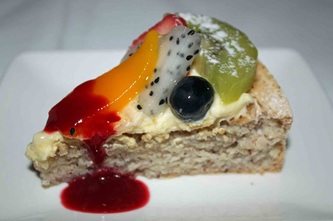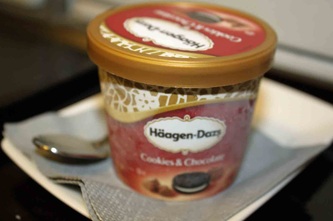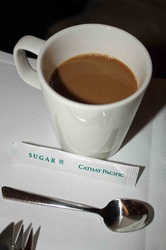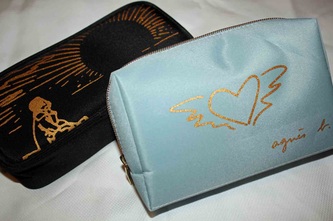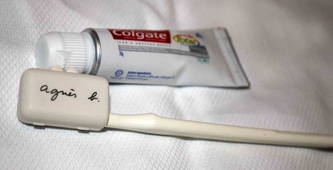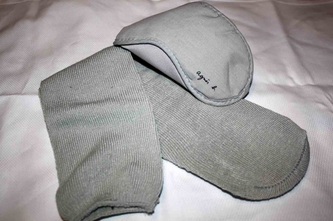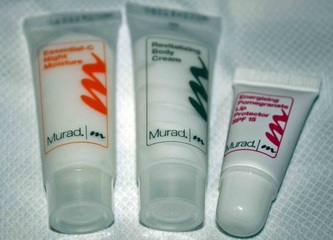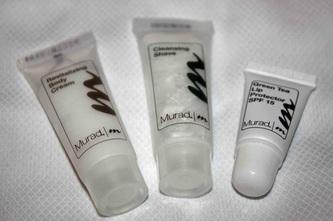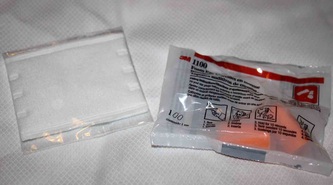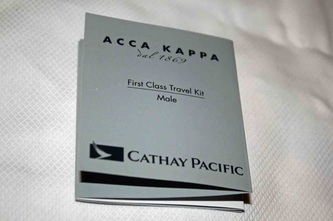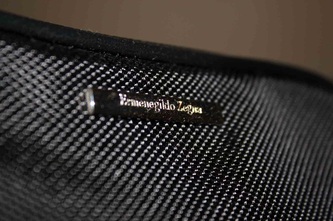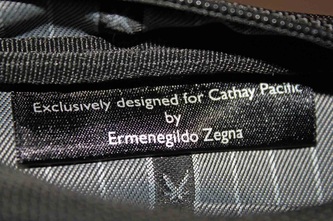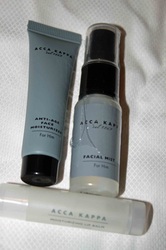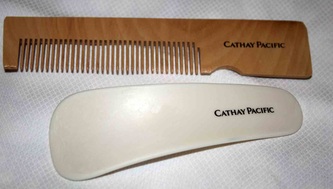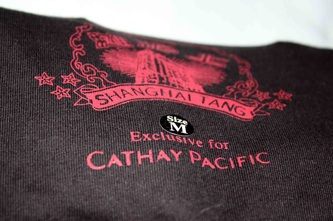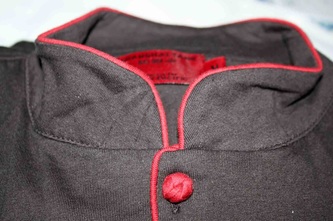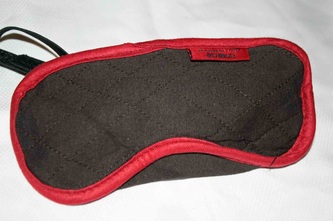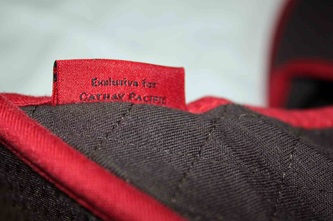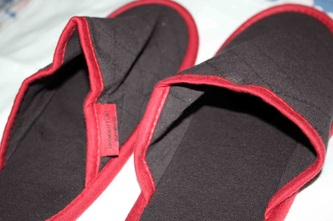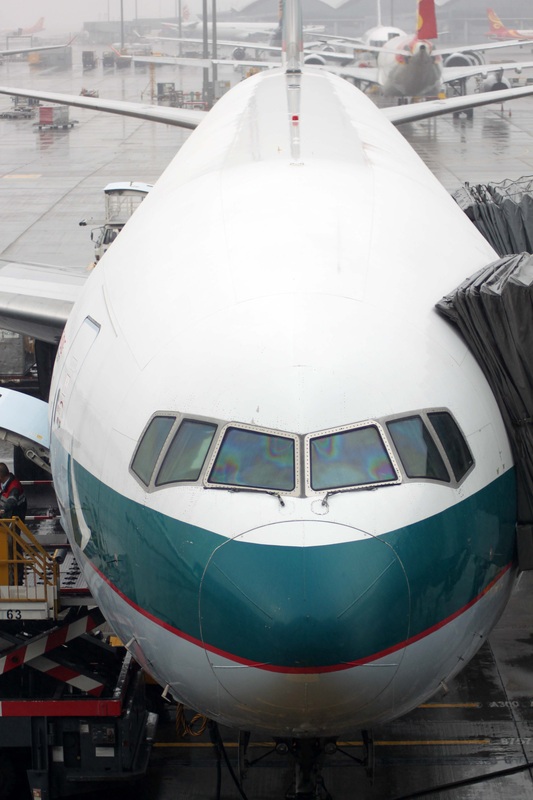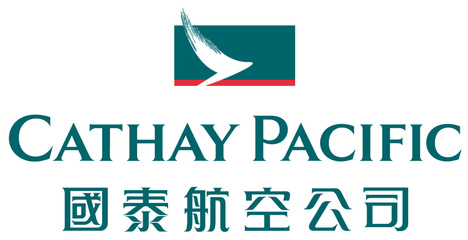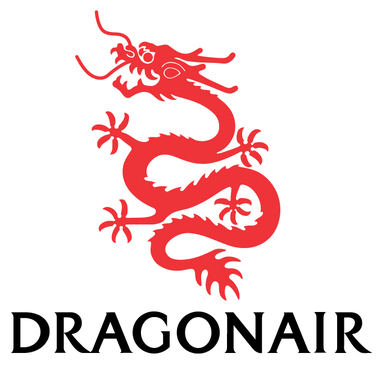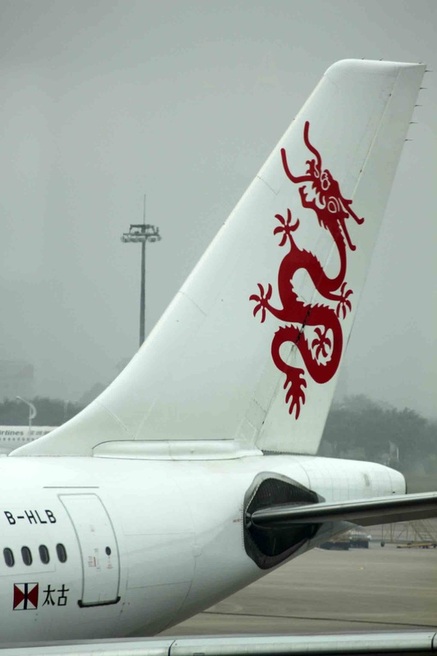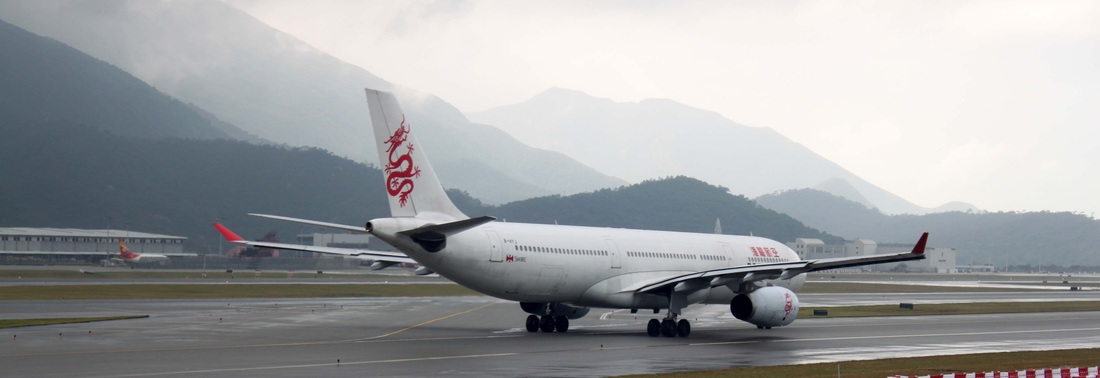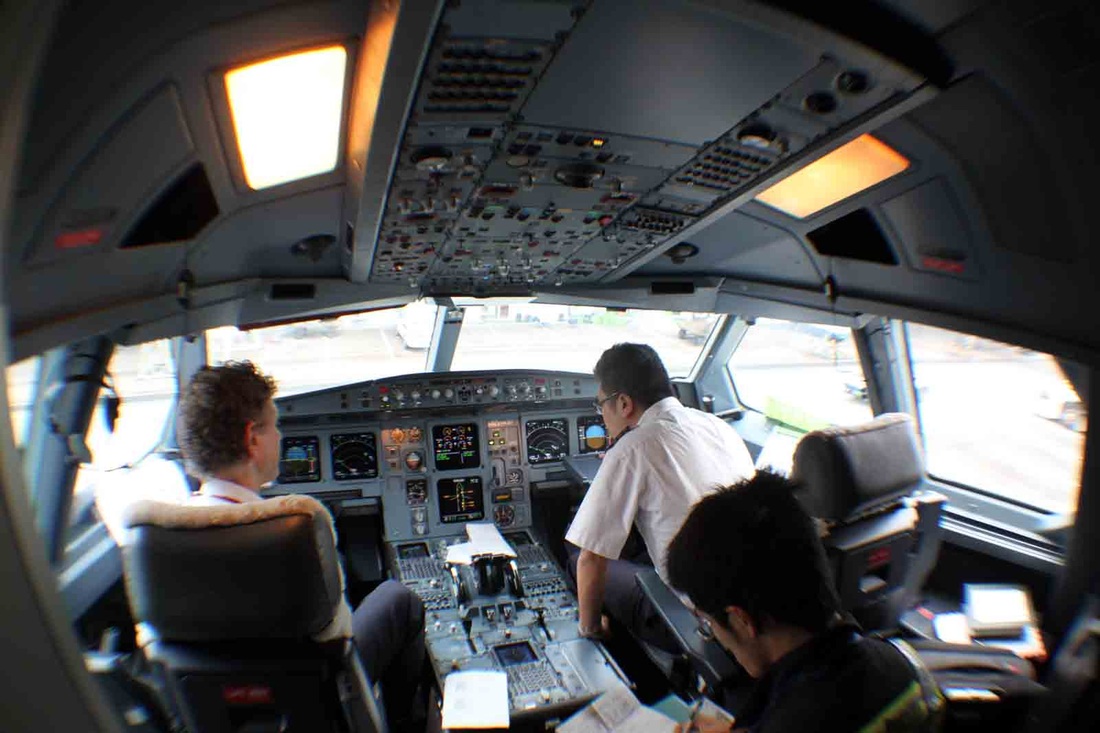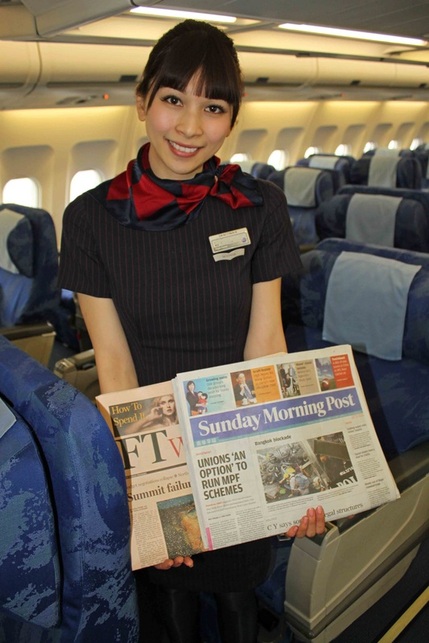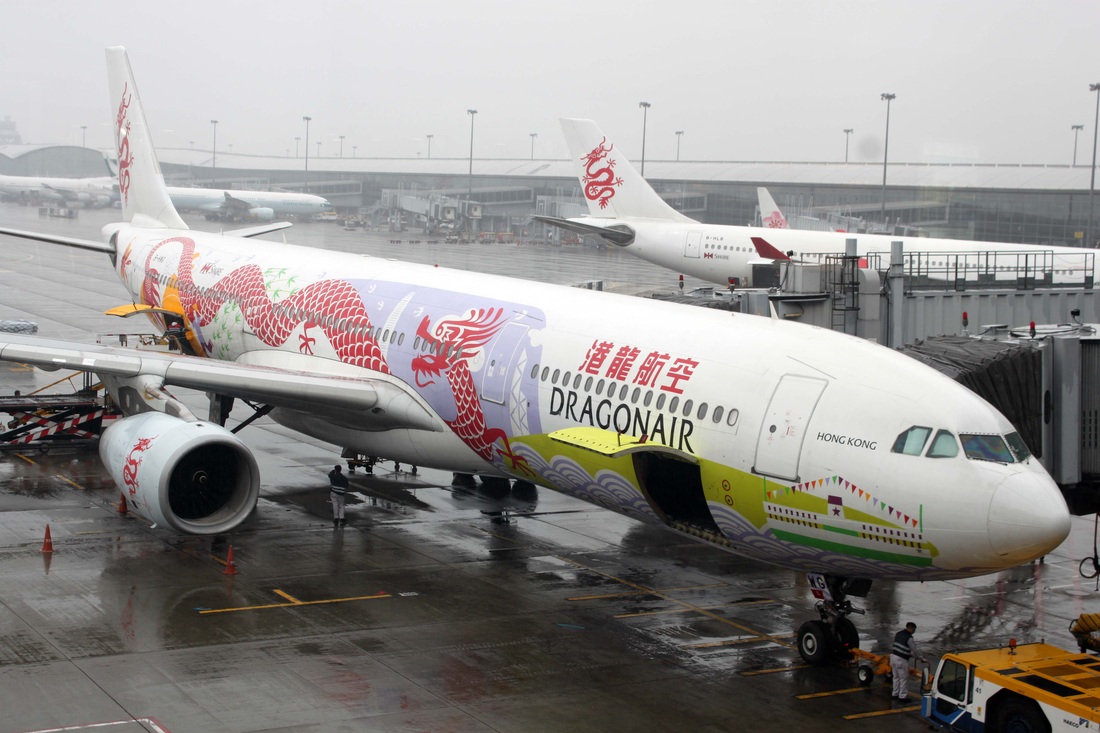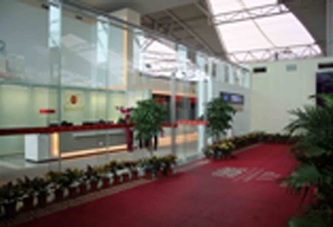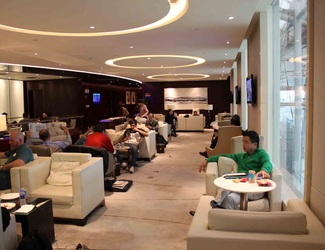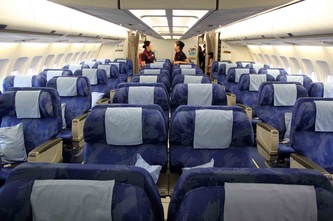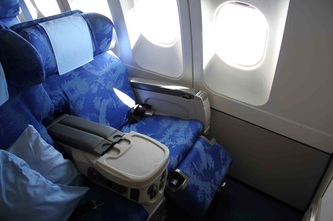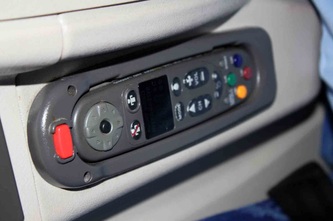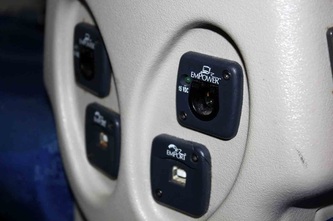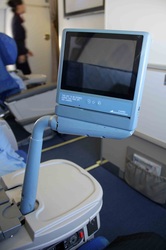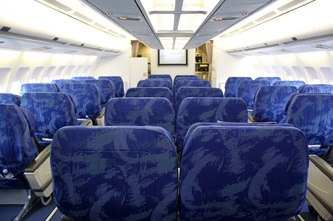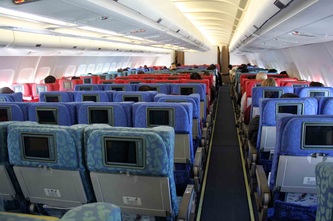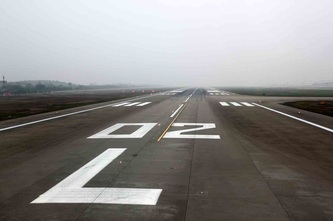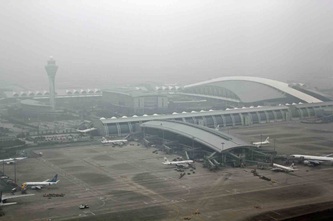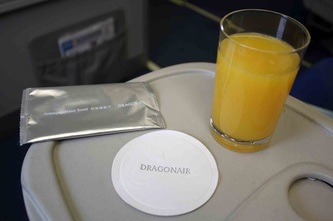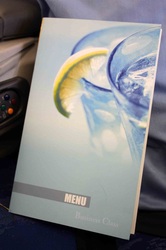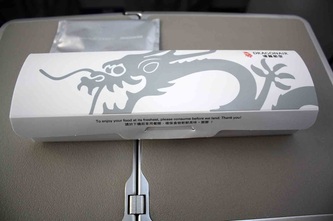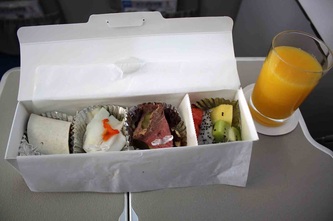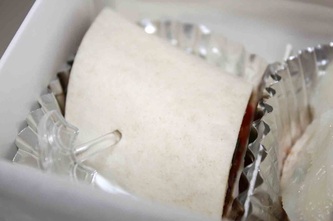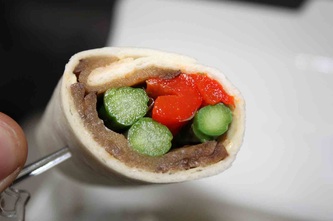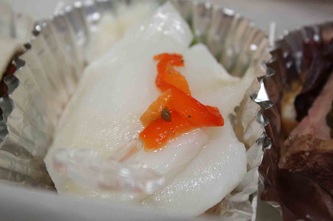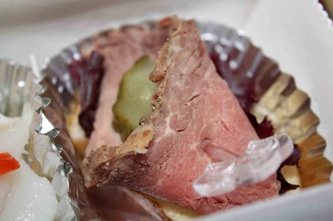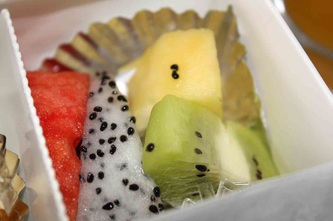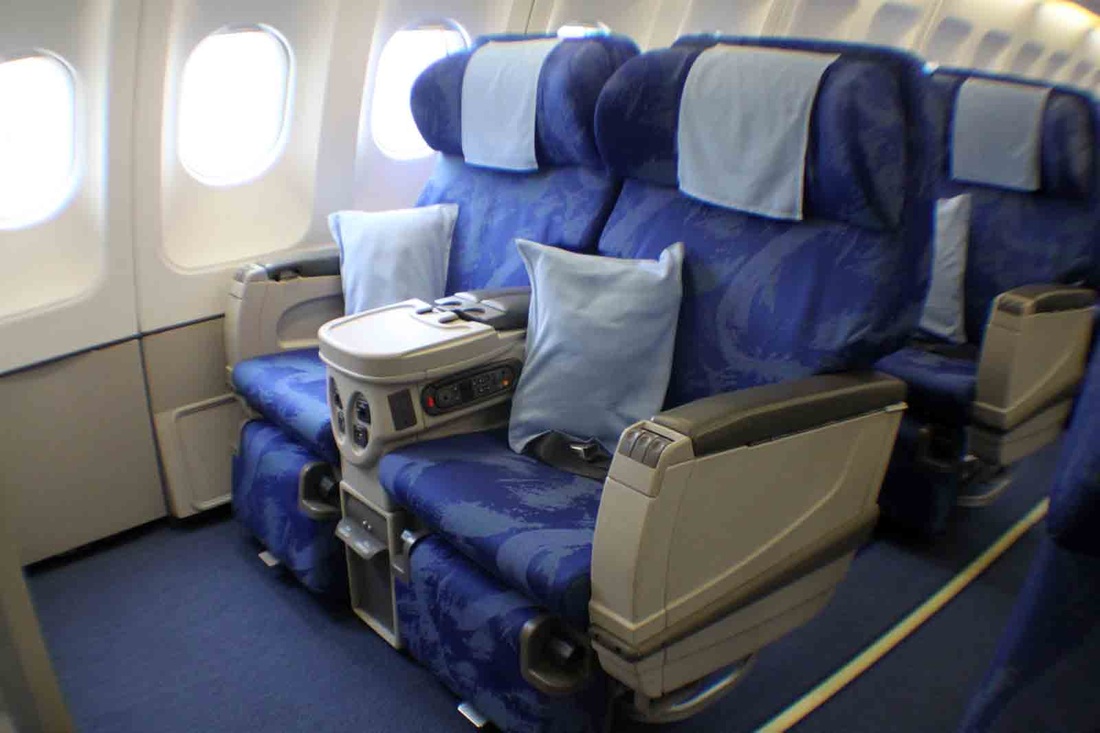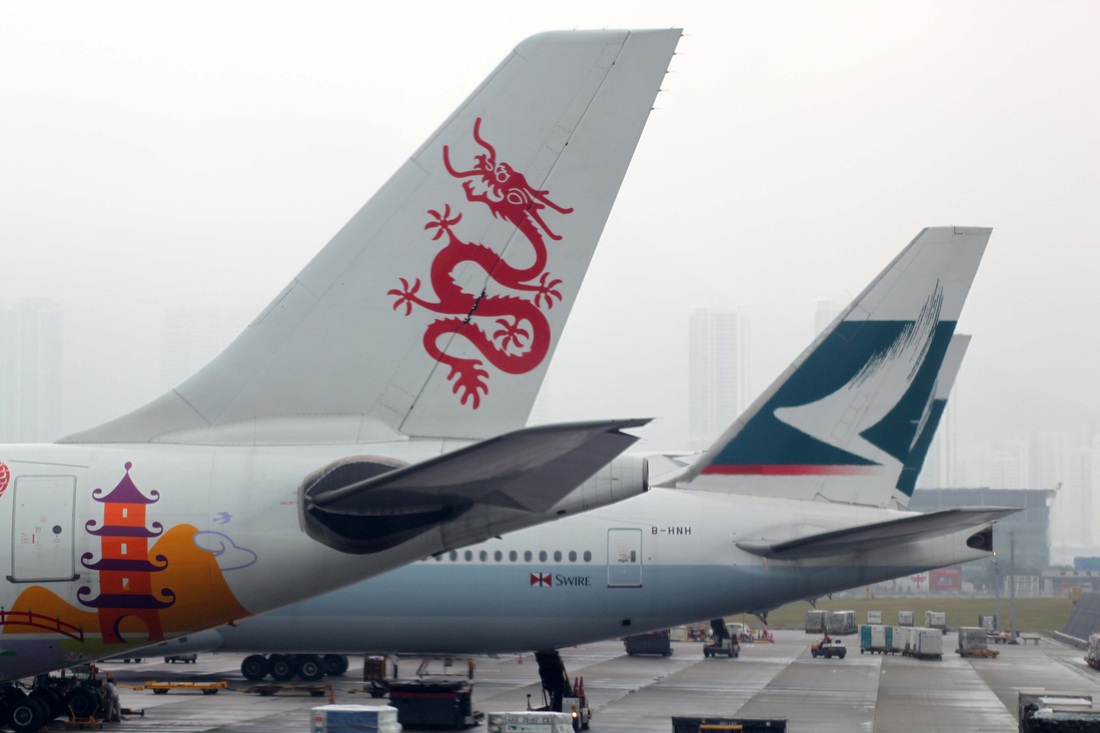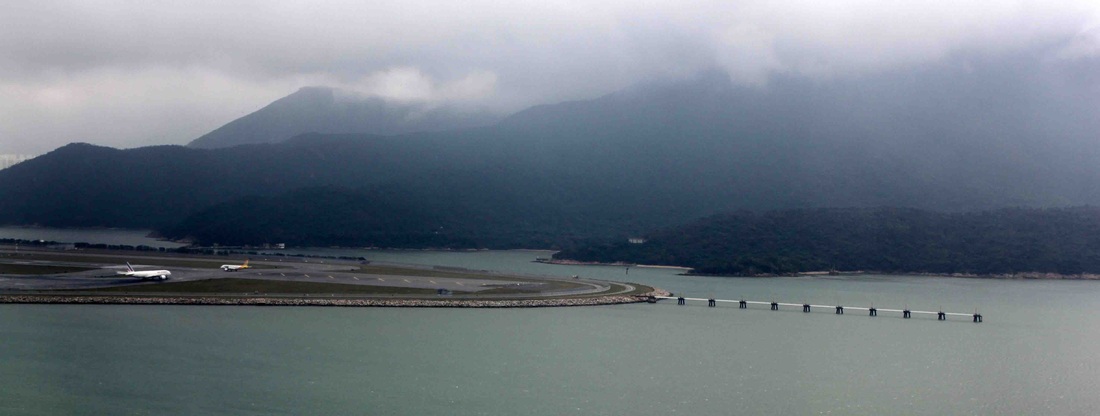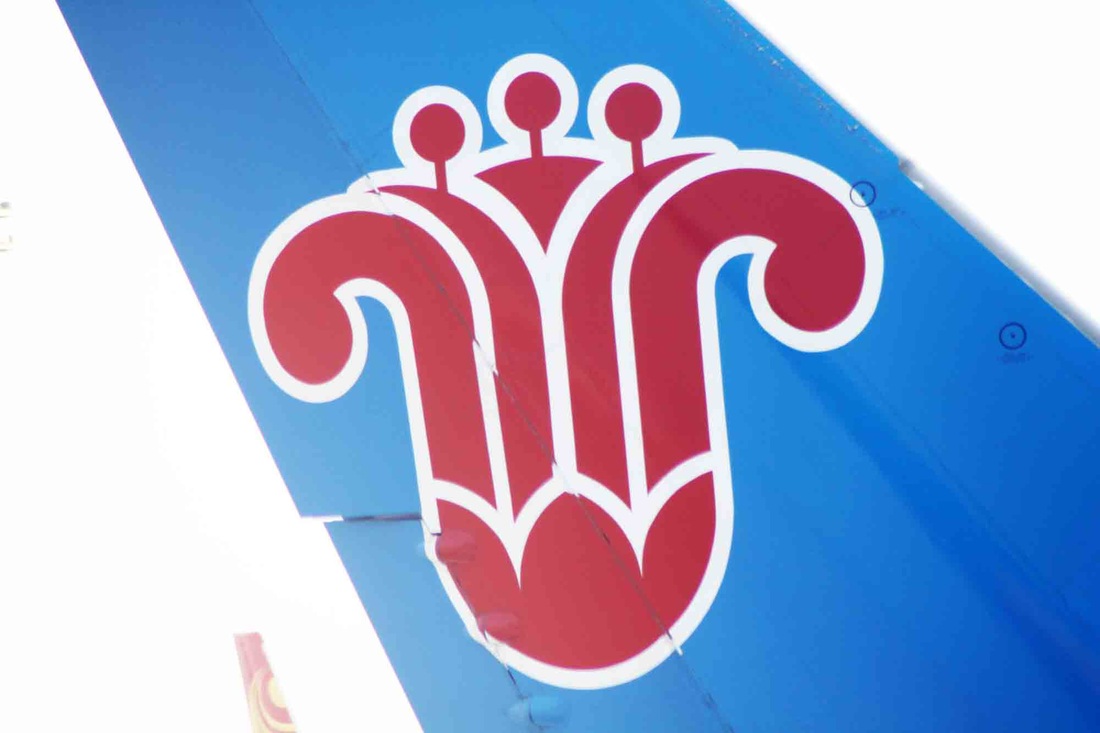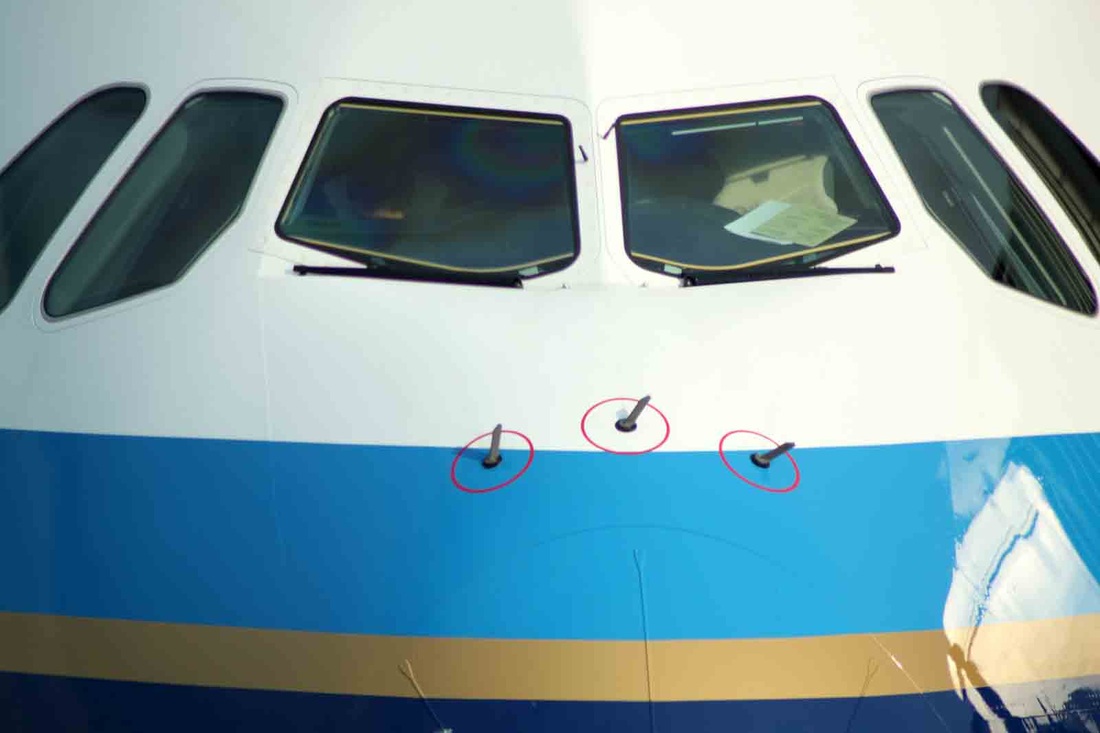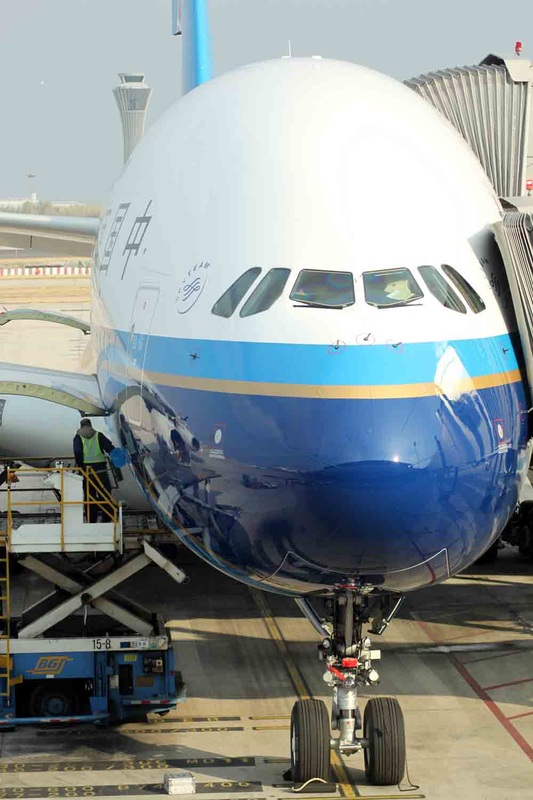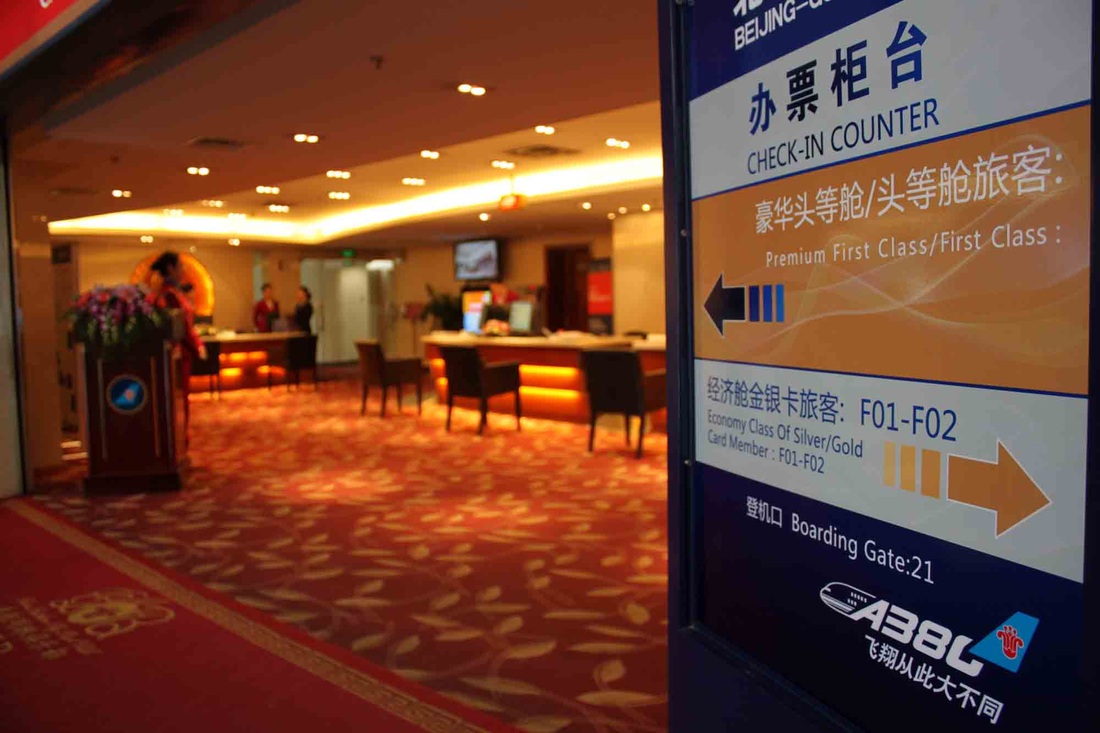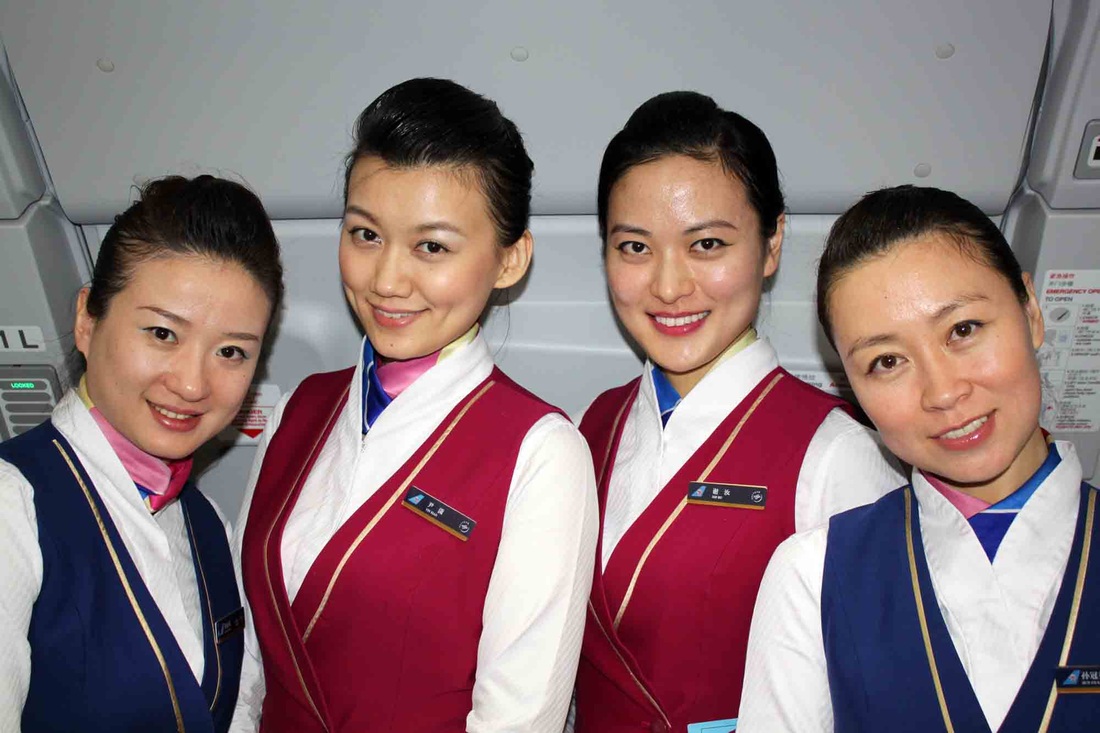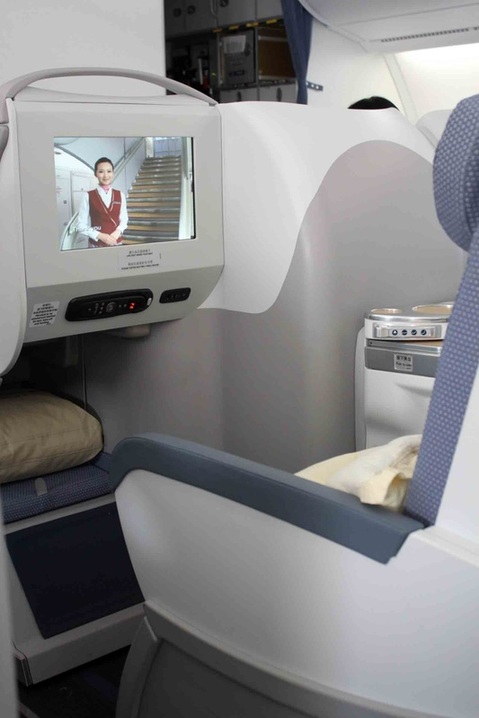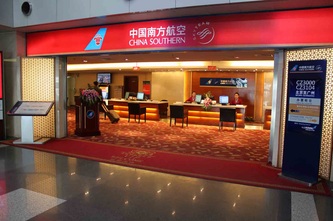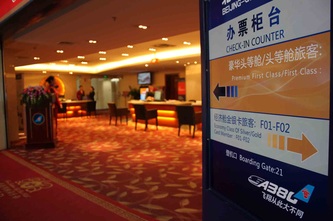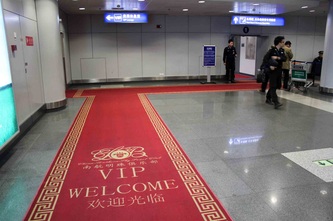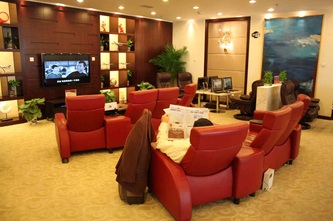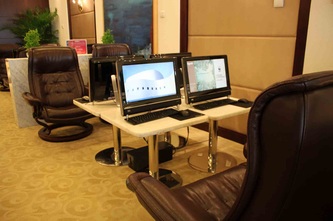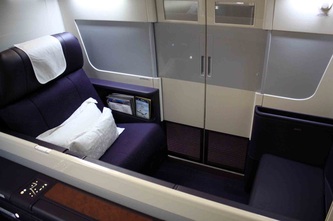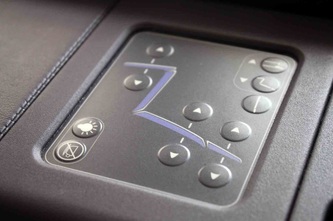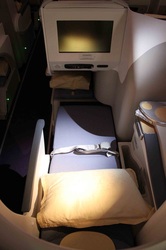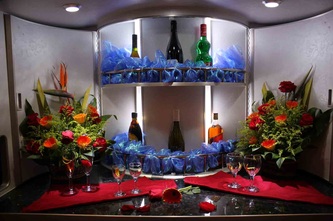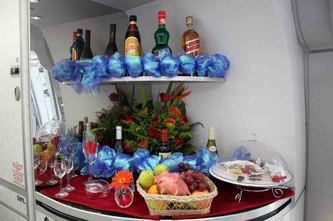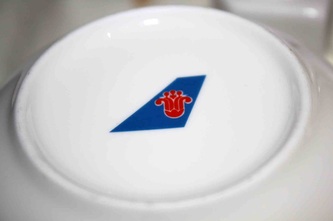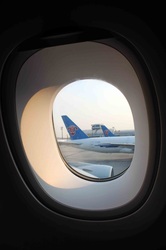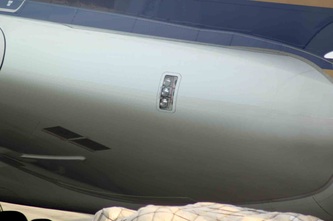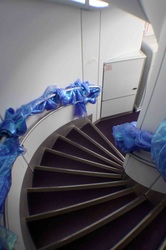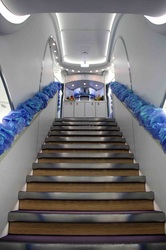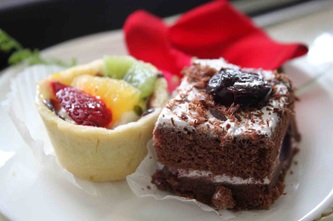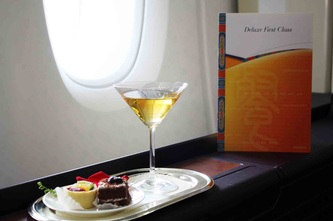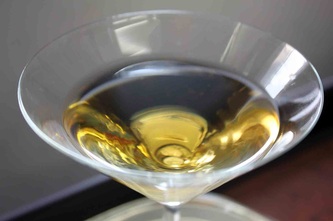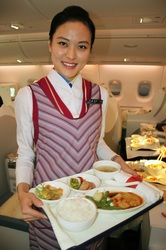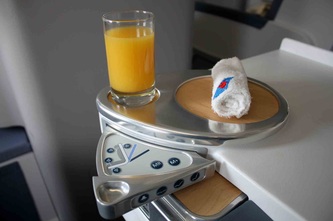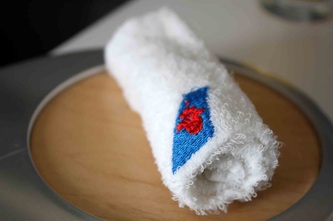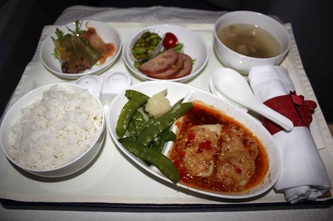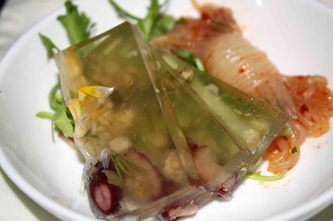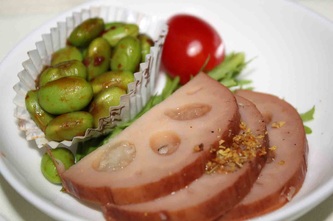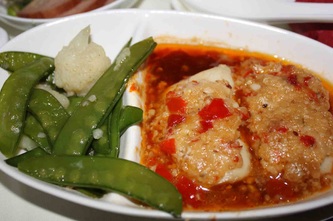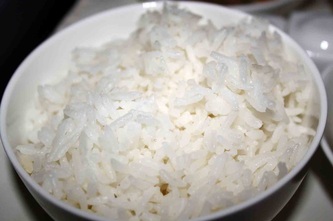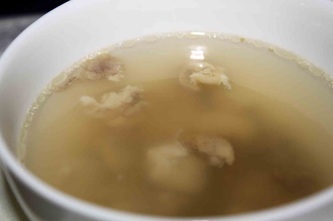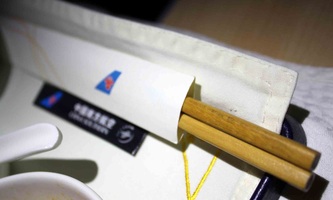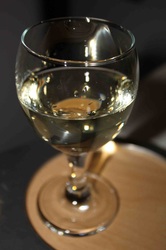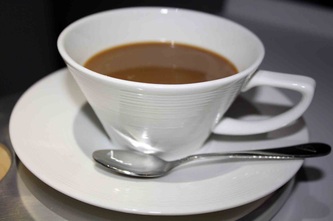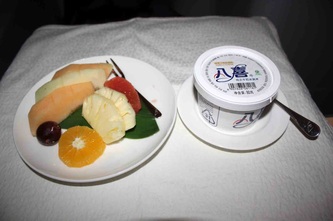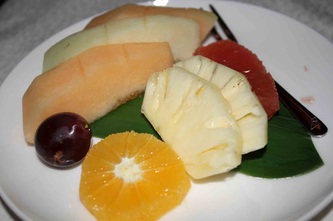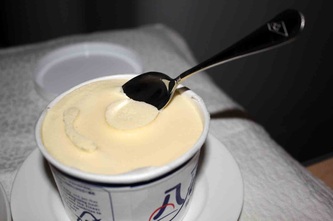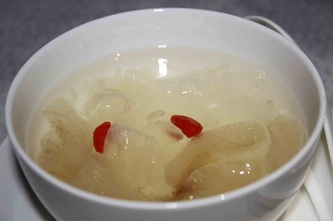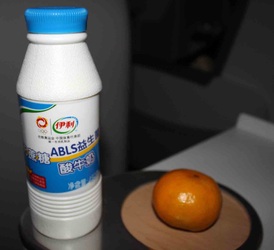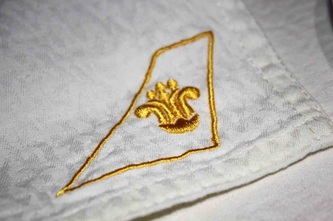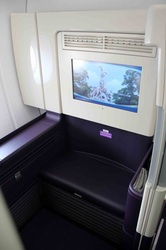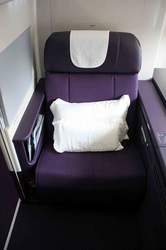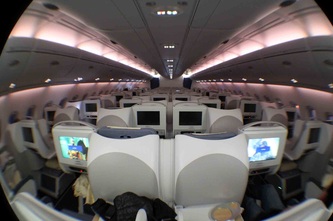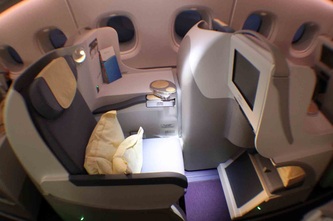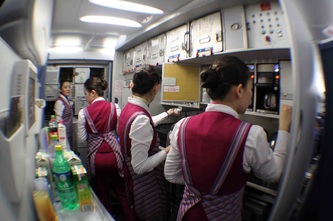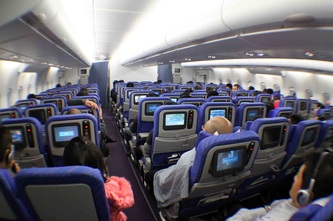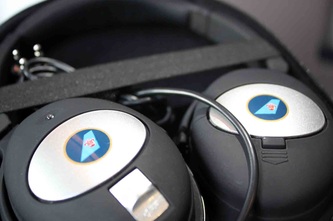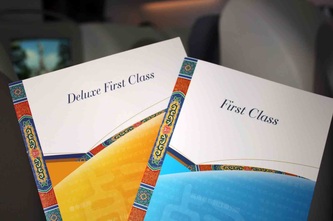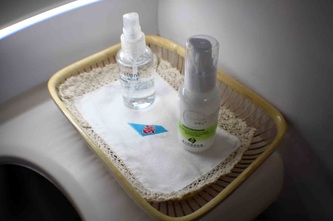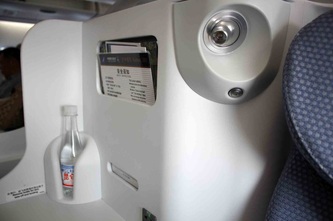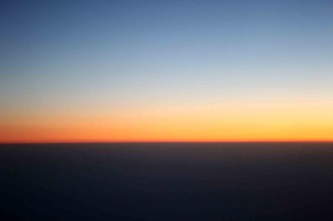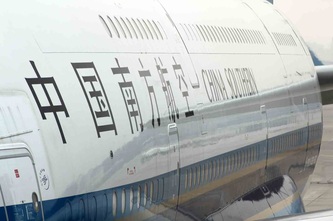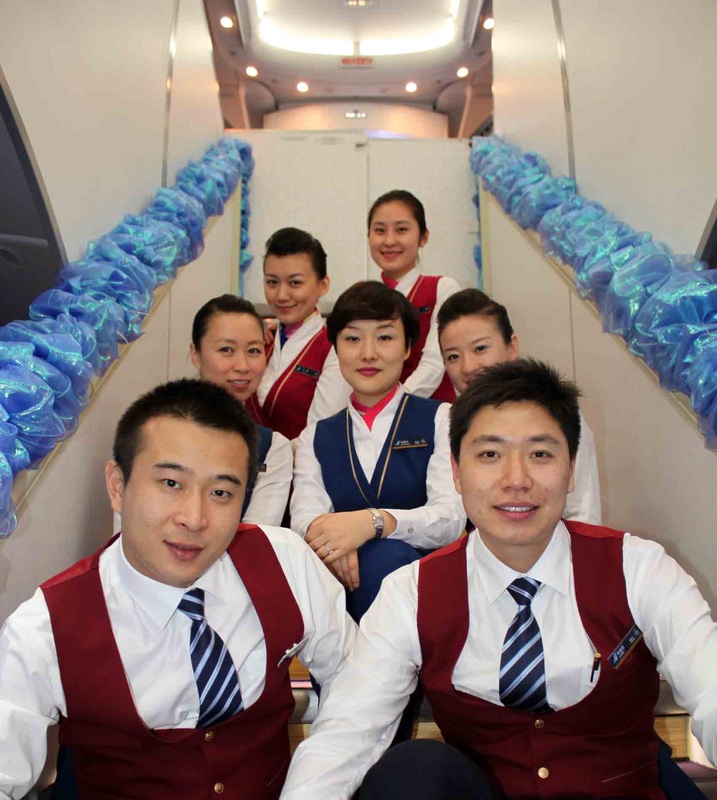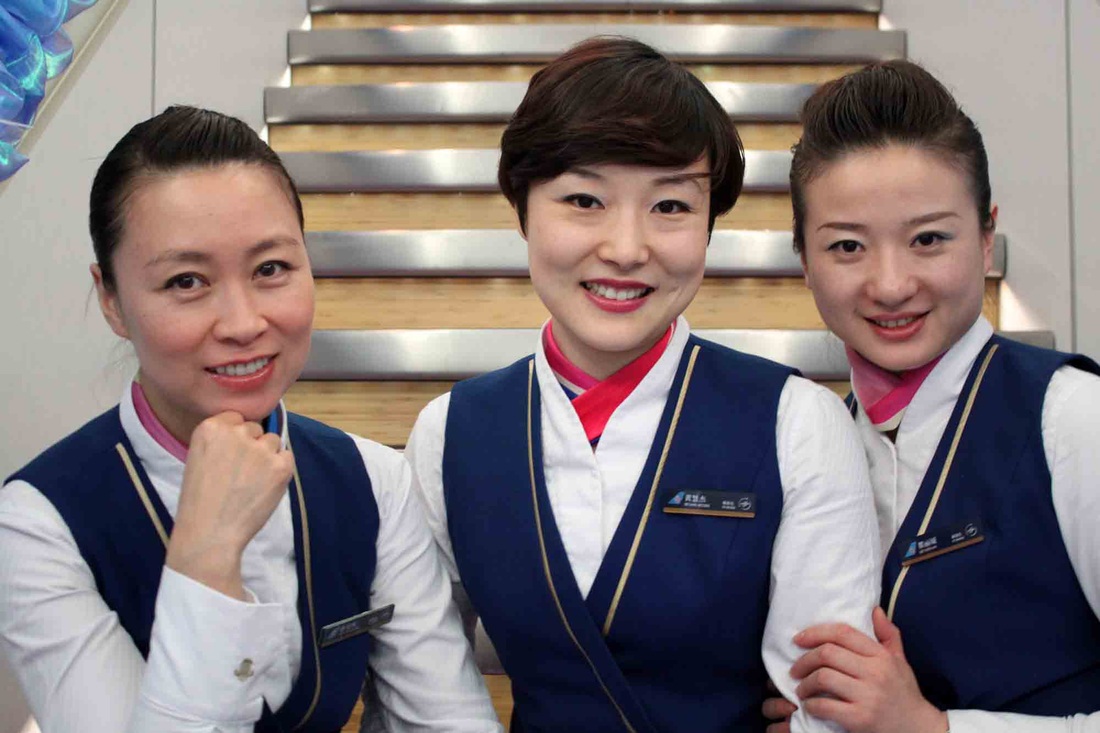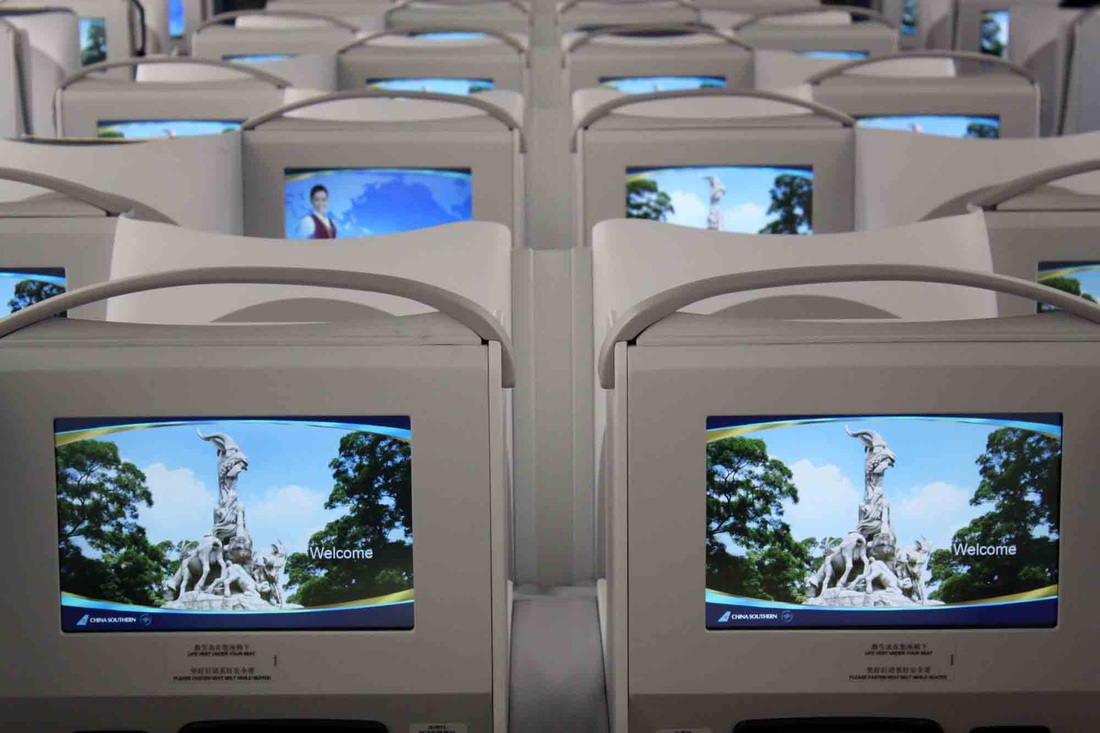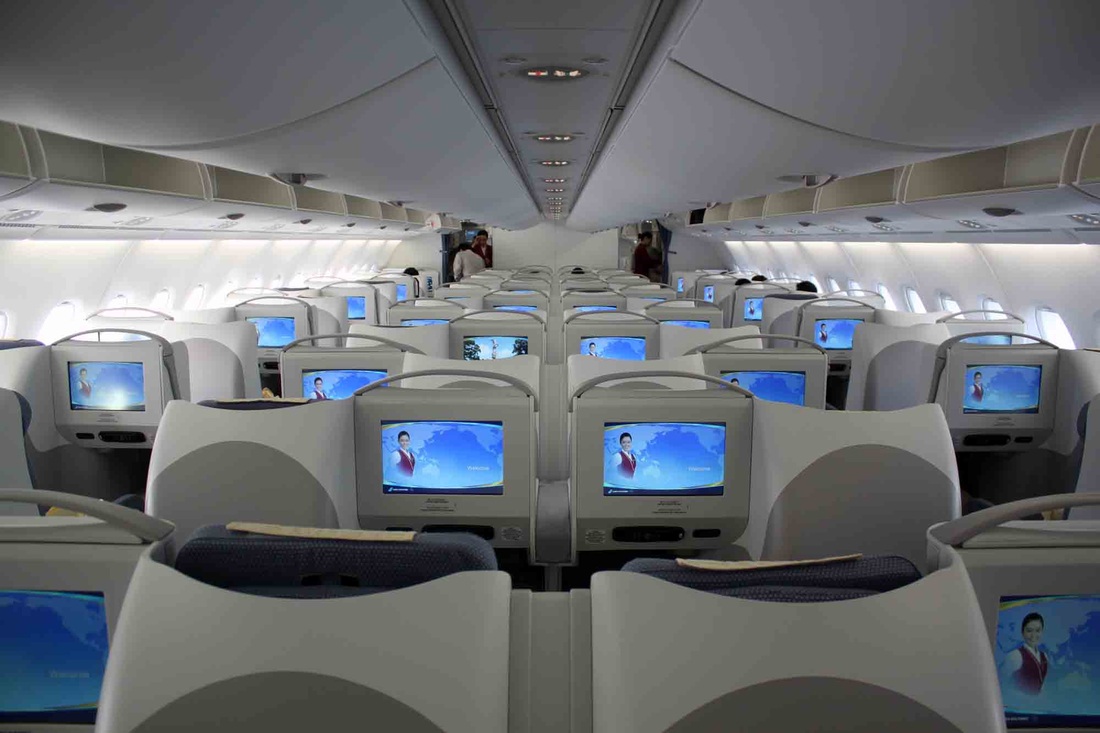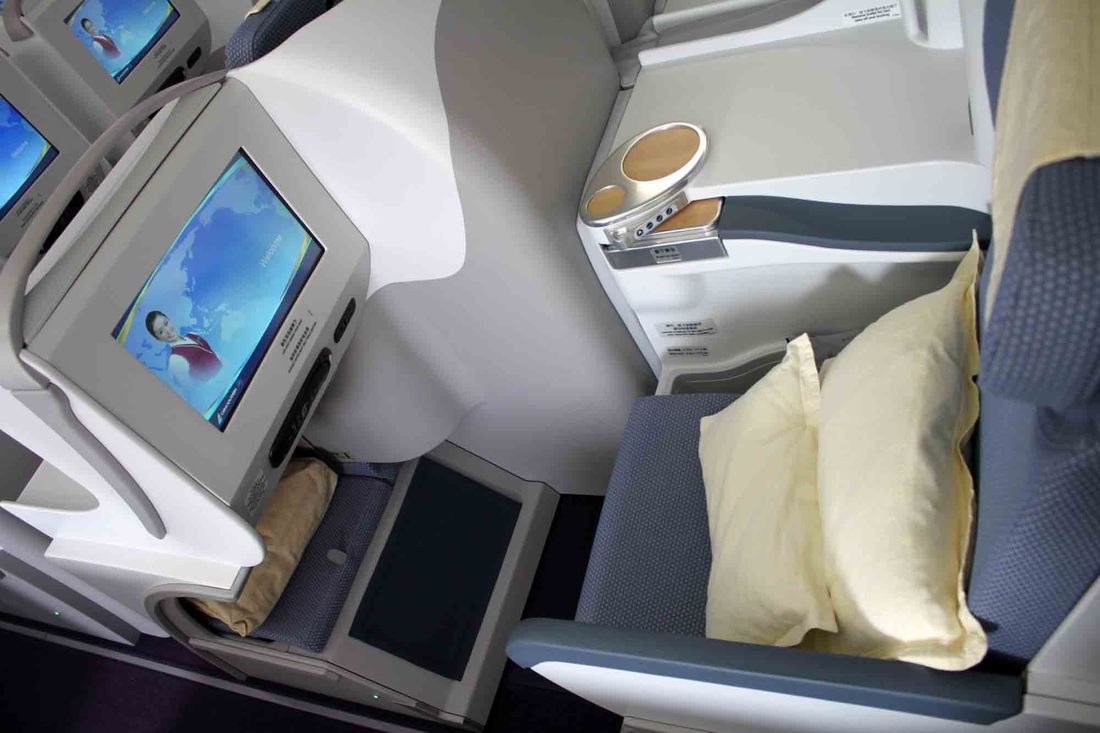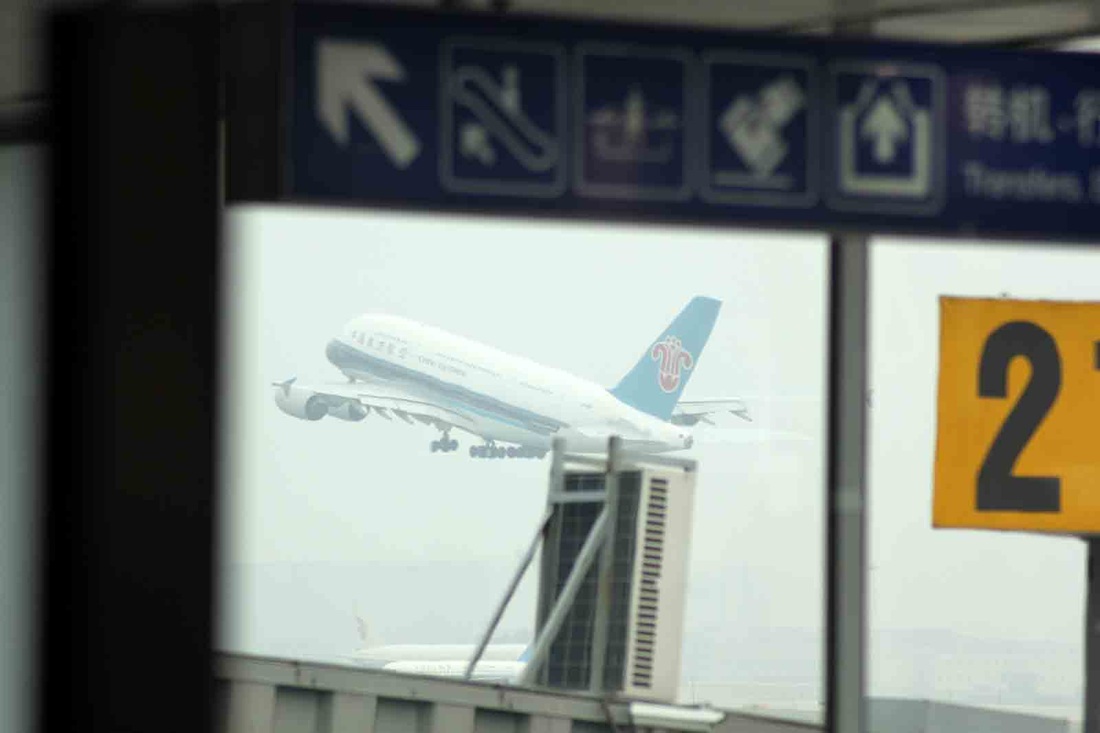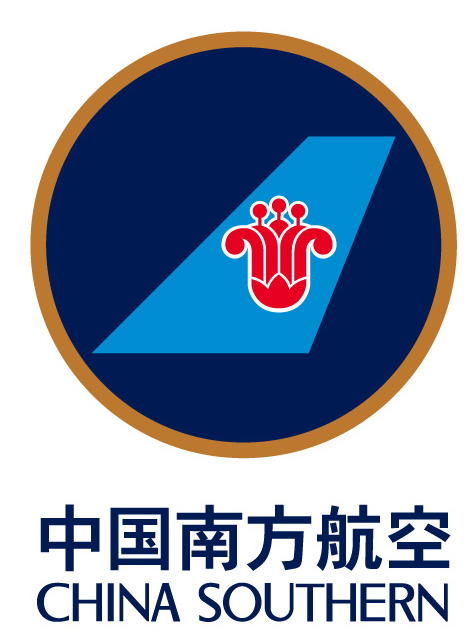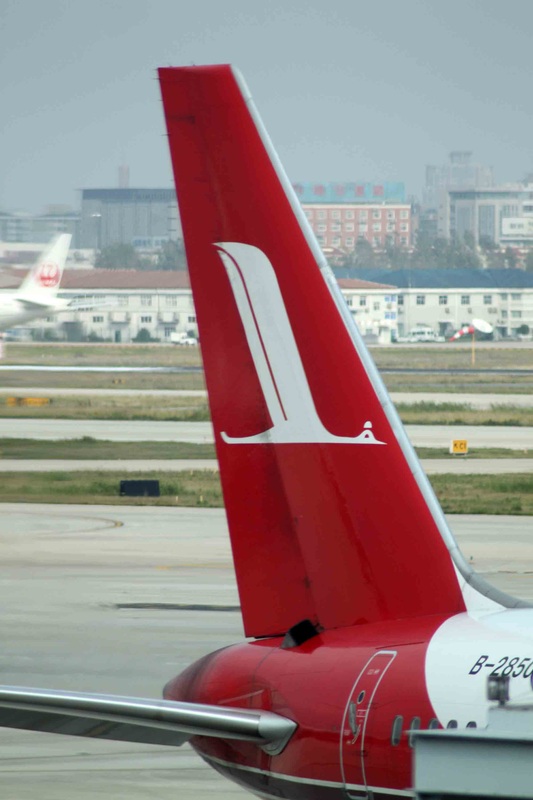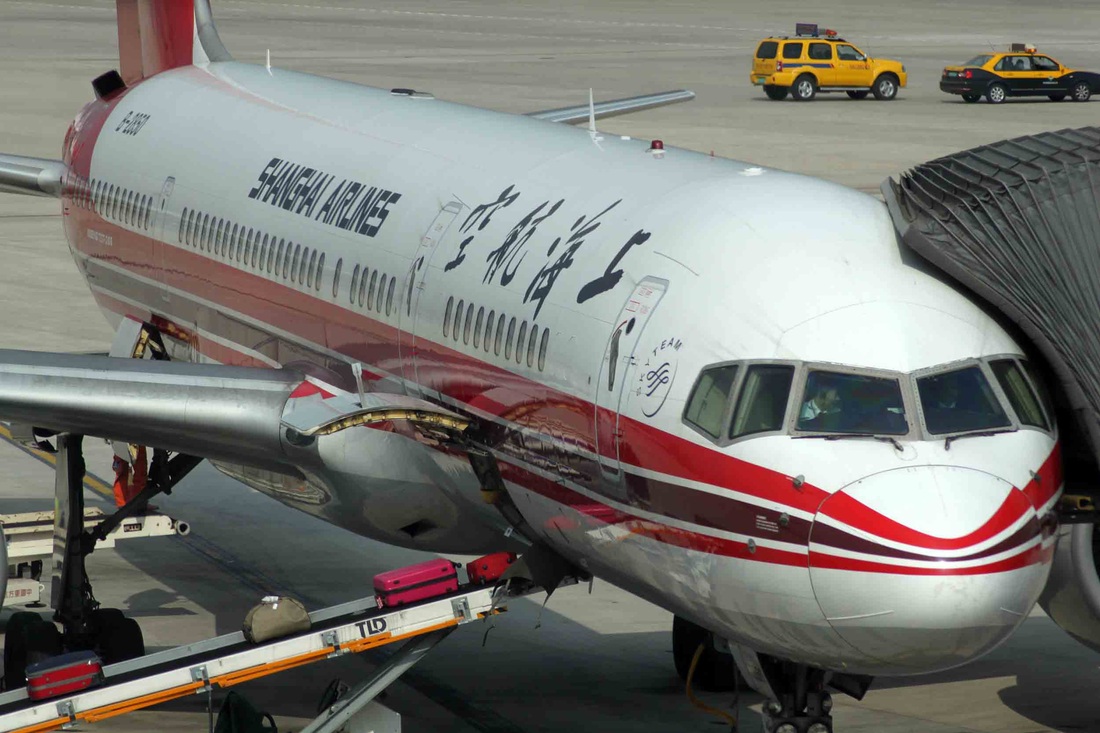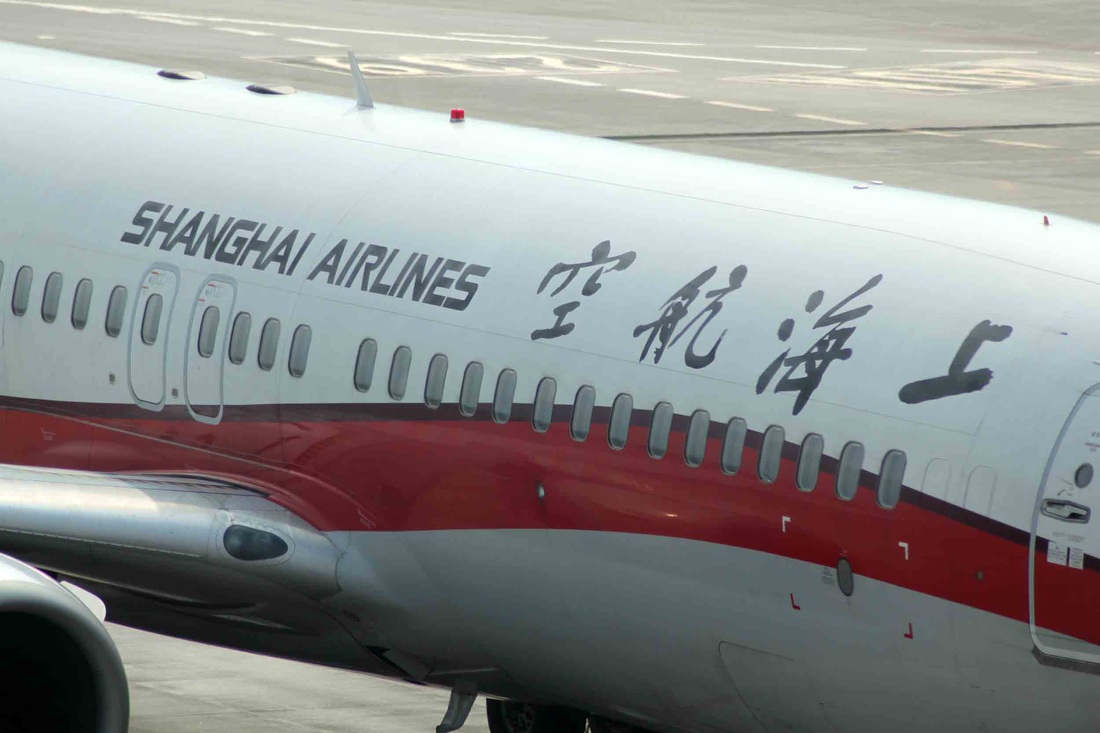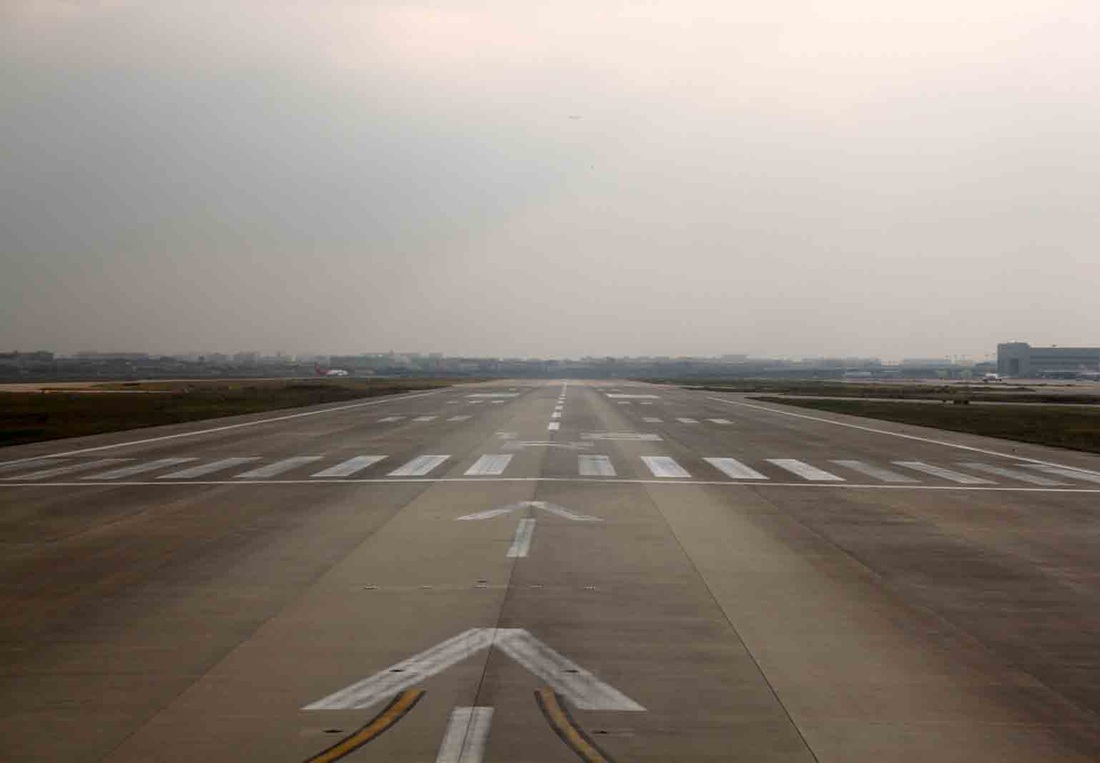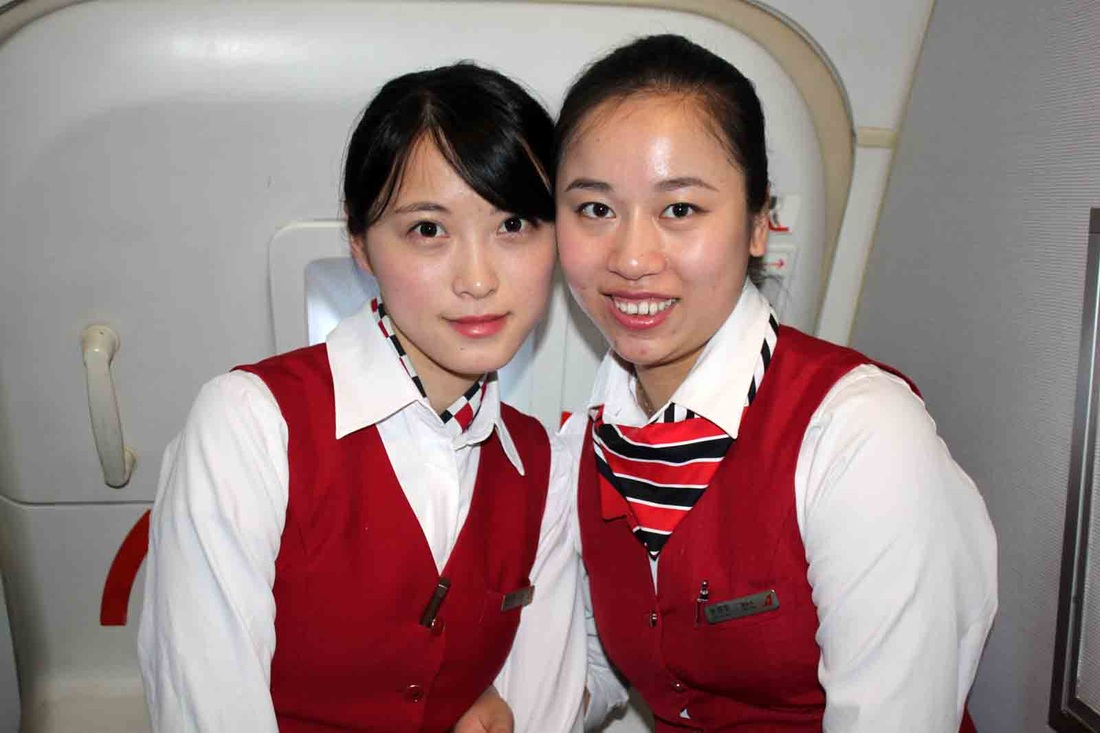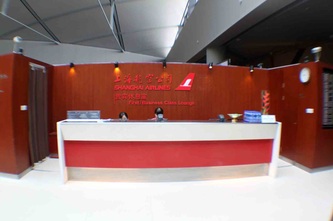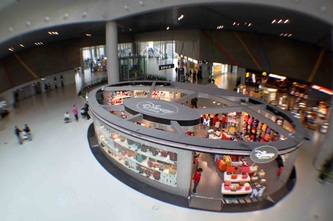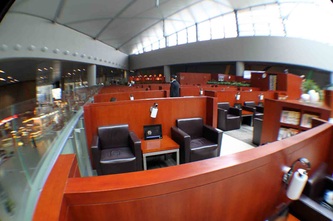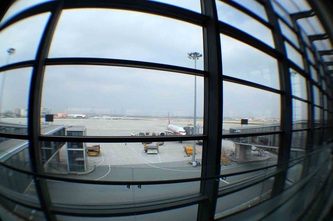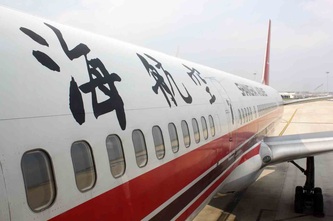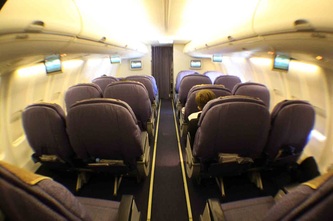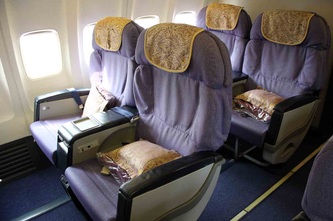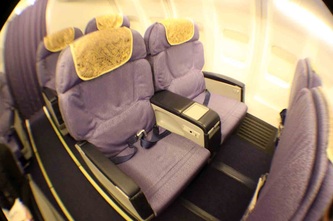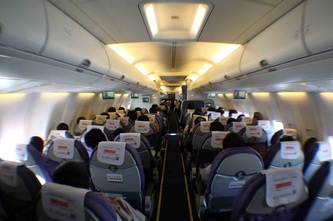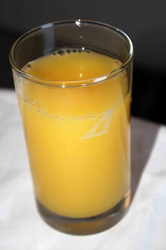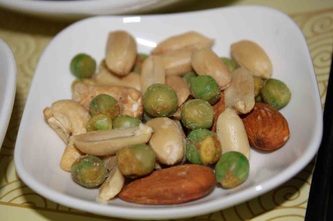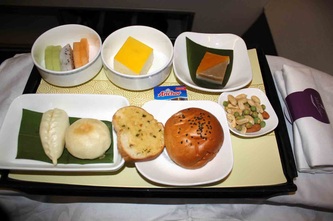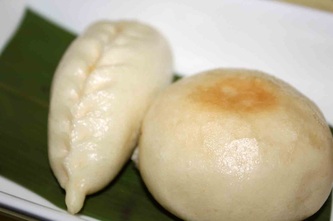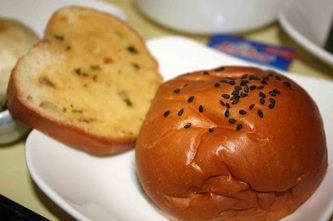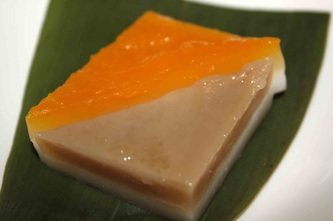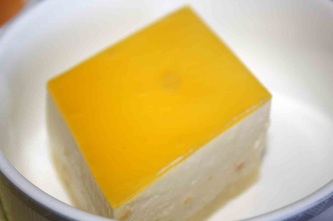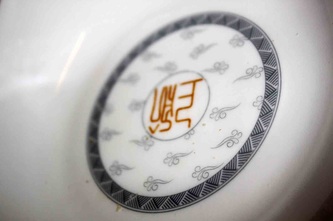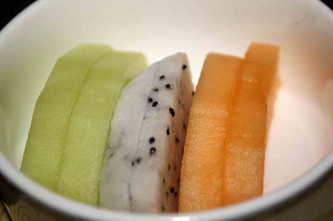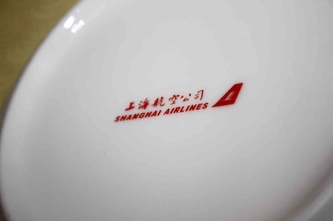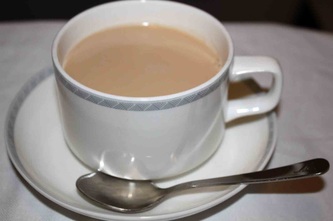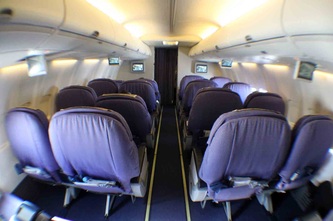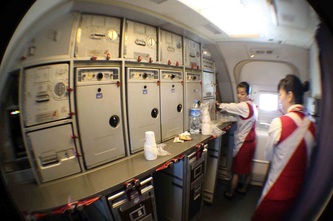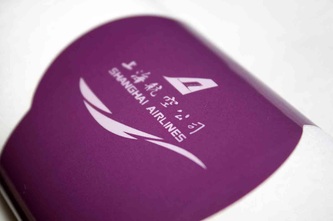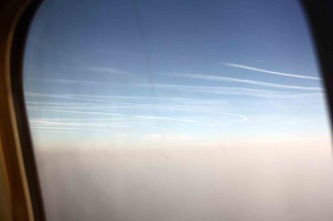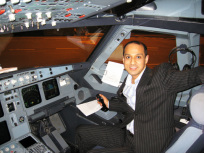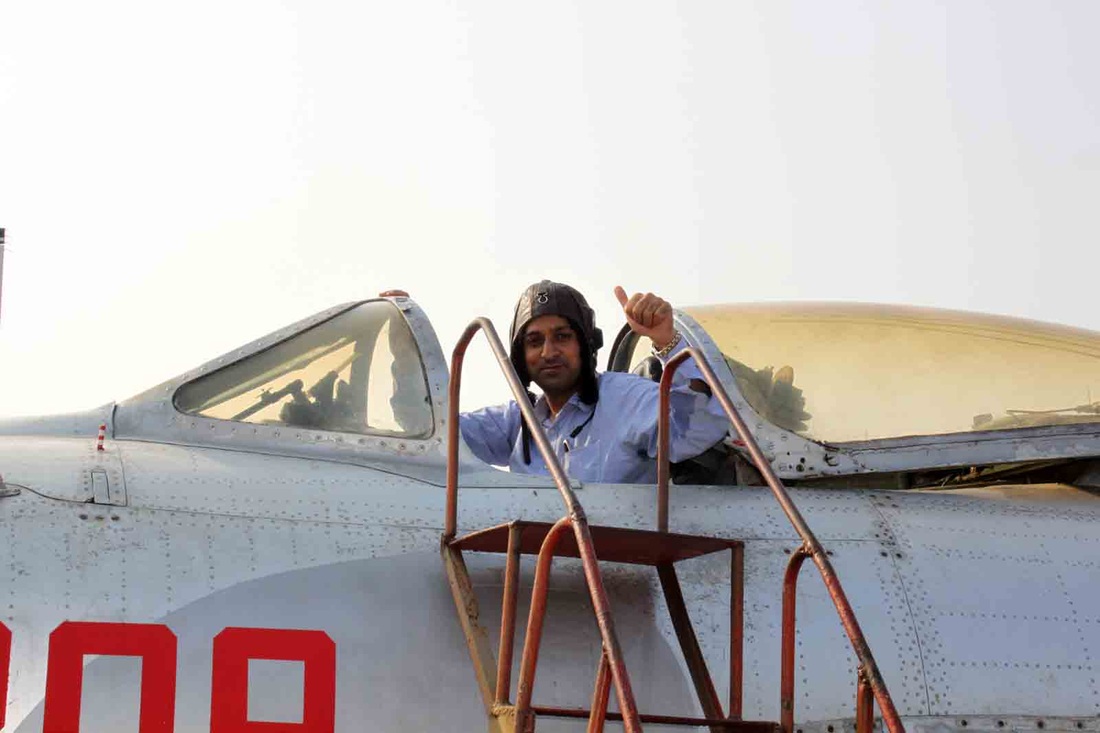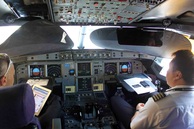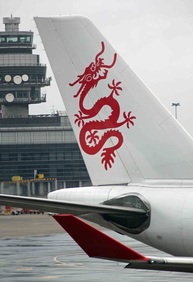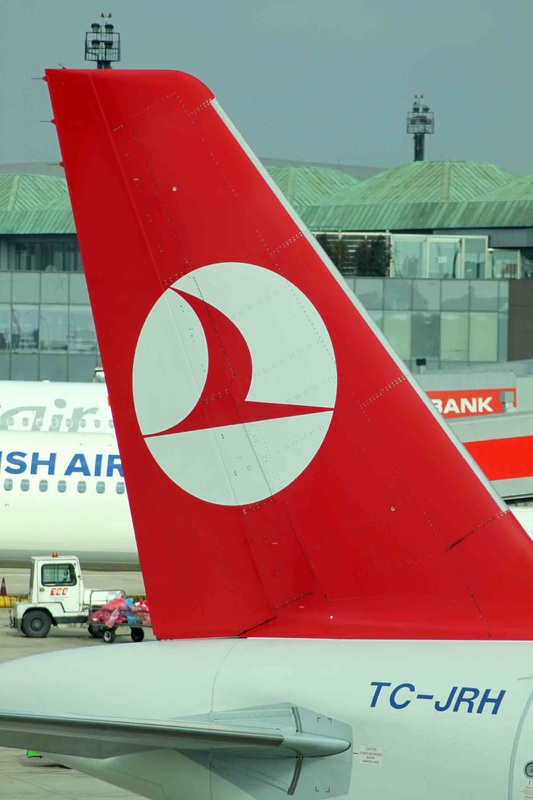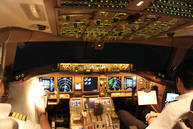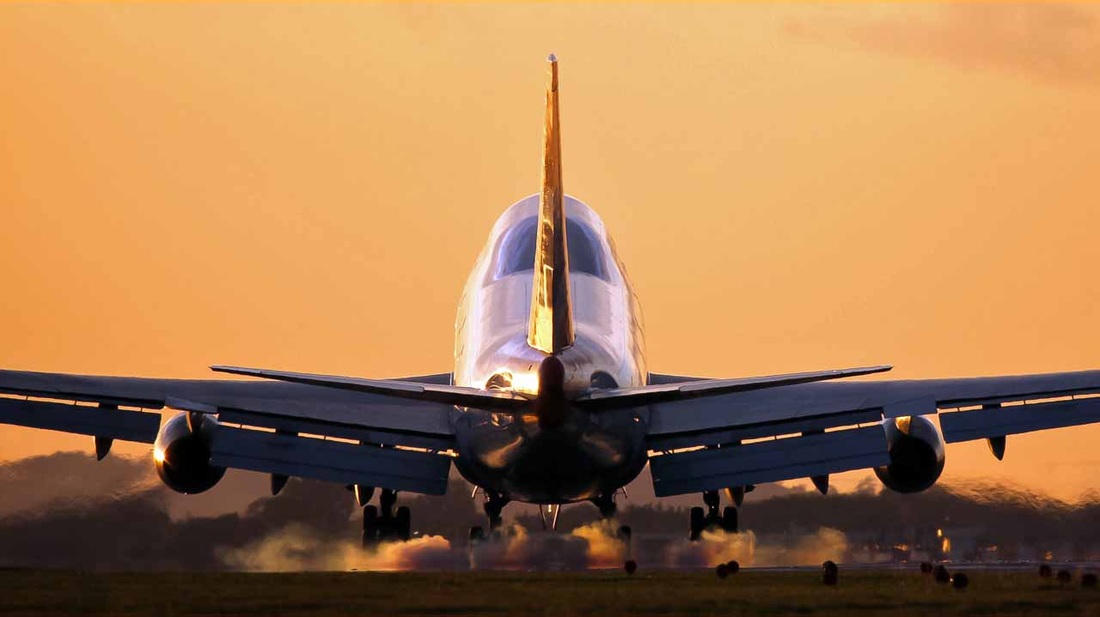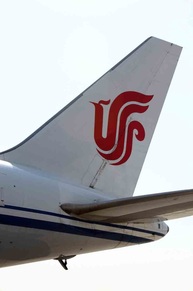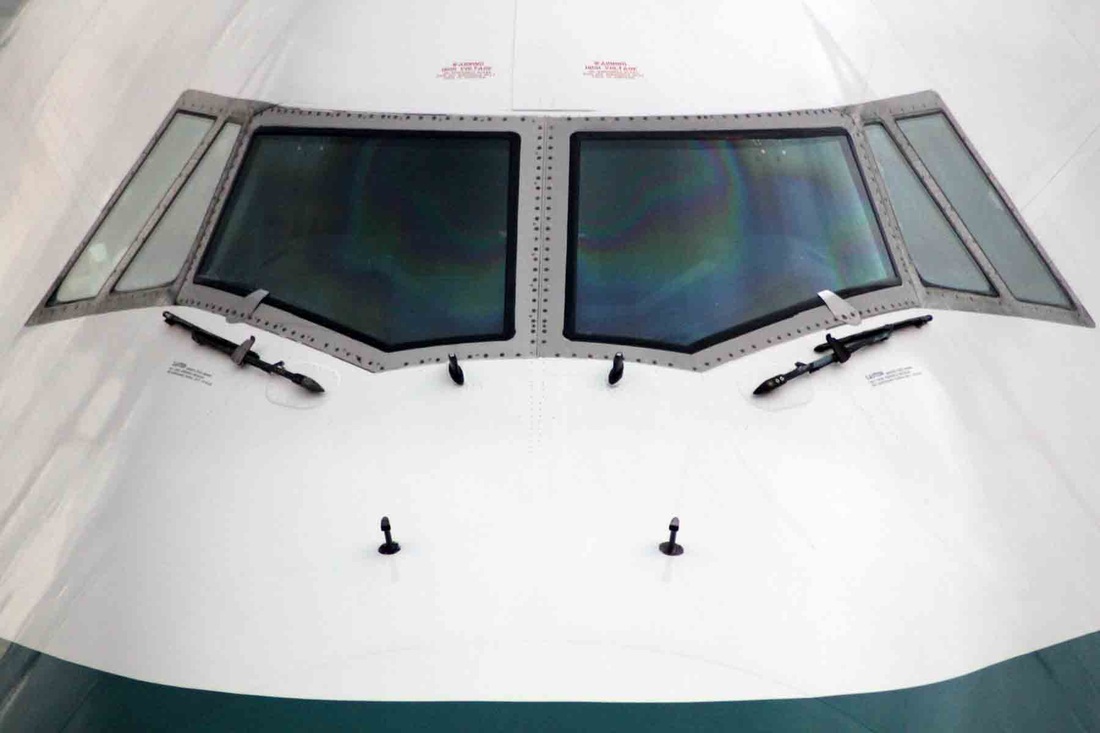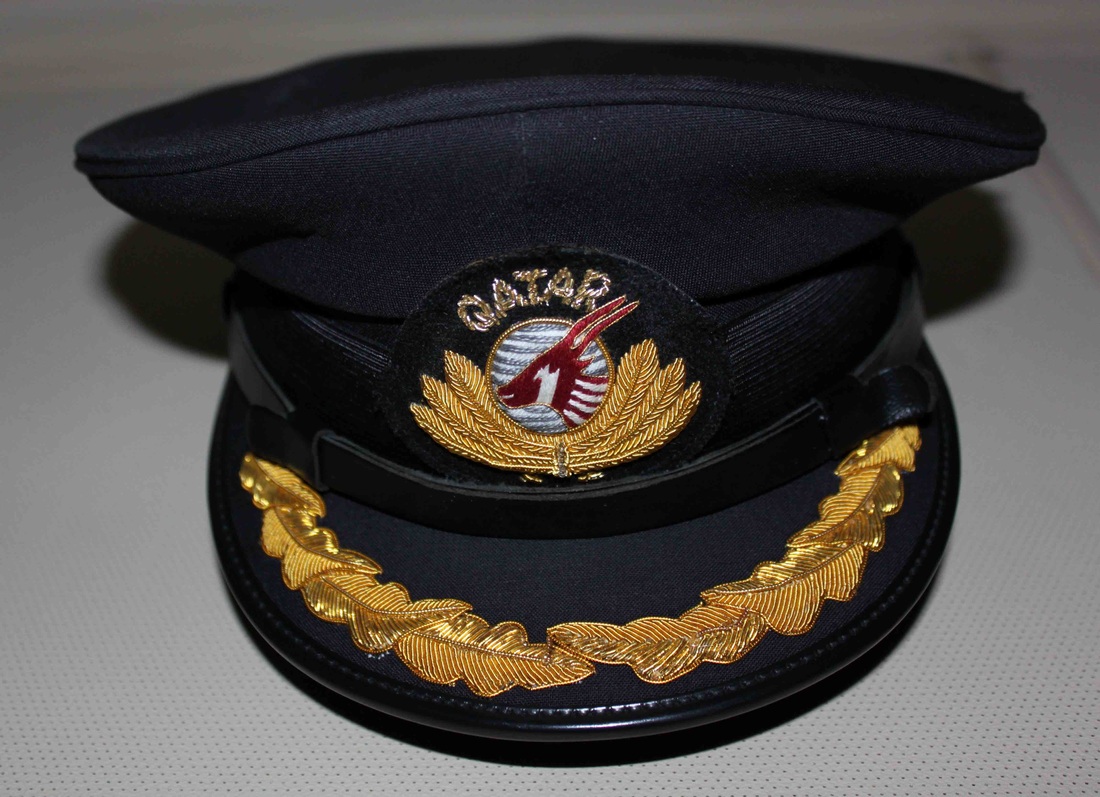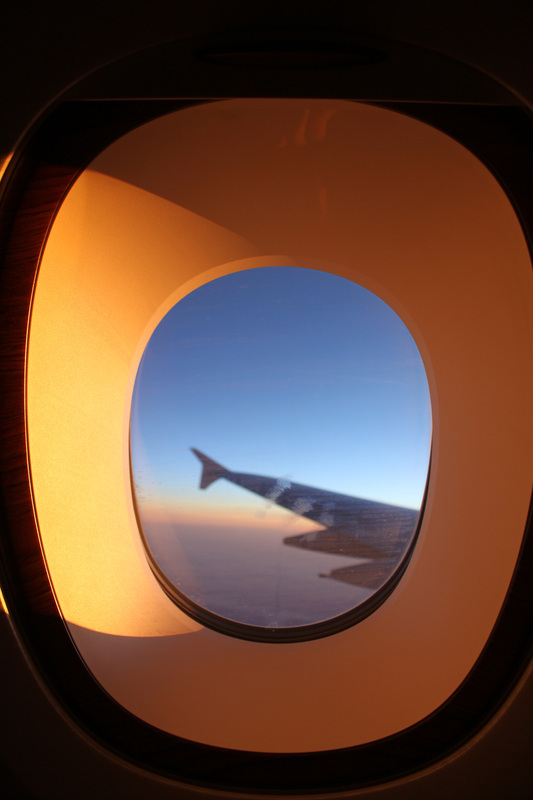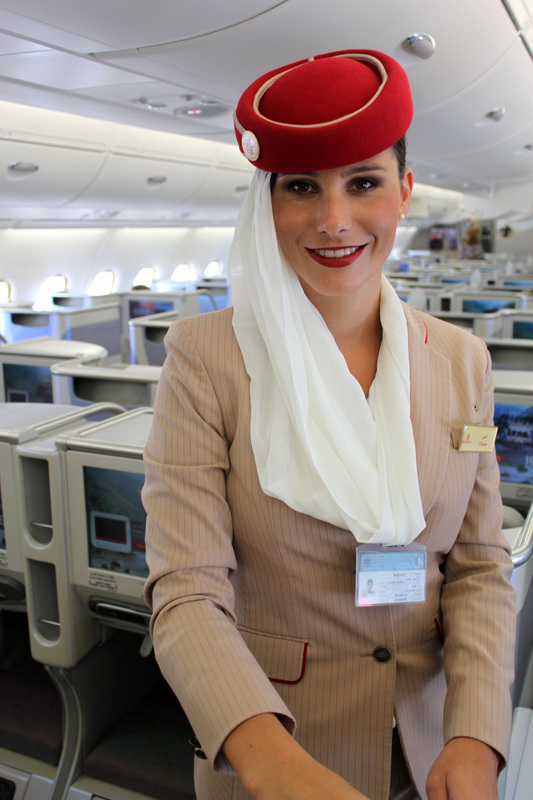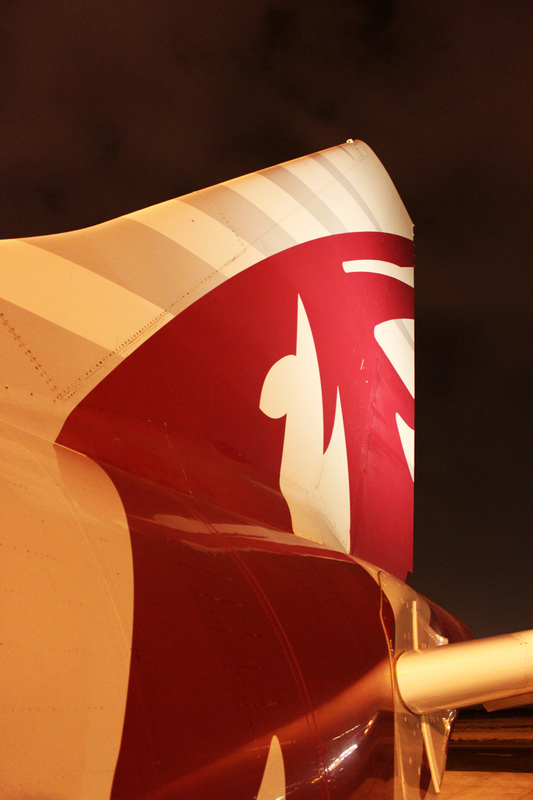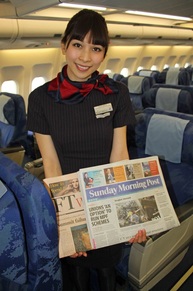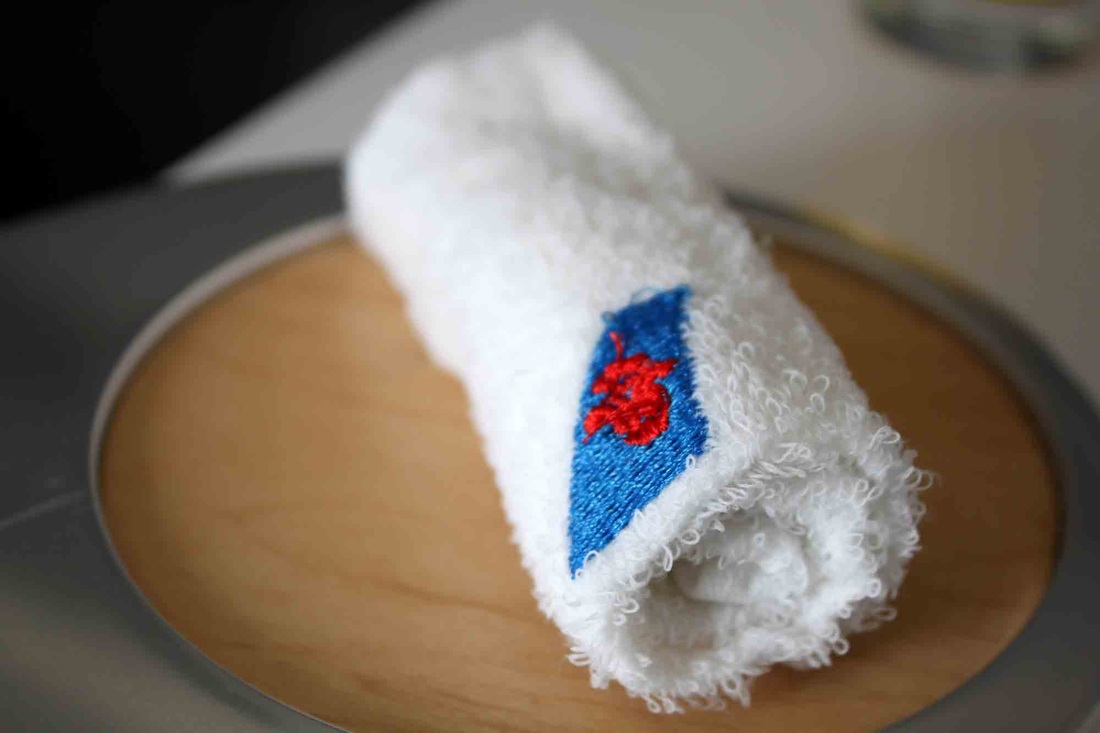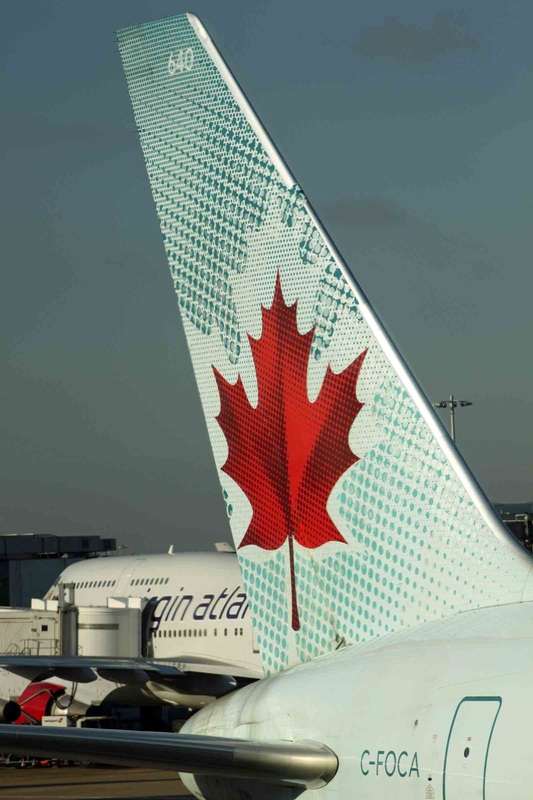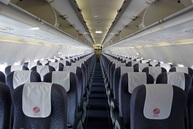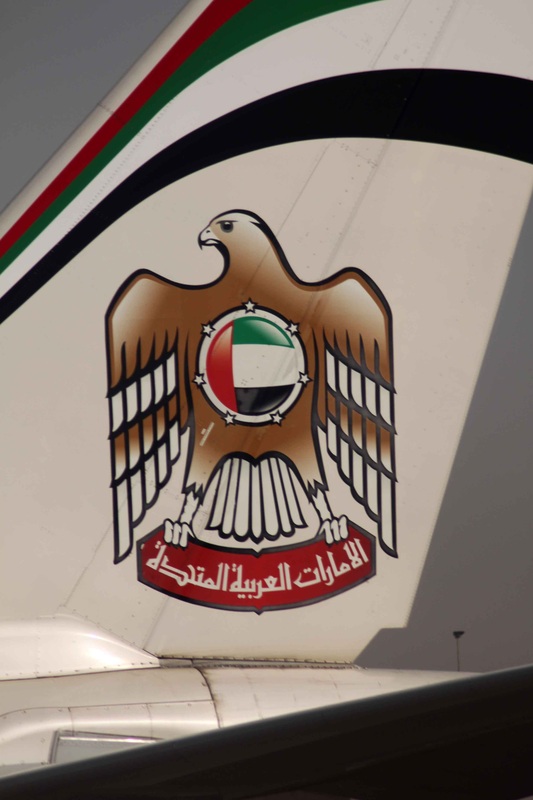|
Official SKYTRAX World's 5-Star Airline Cathay Pacific Airways is an international award-winning scheduled airline registered and based in Hong Kong, offering passenger and cargo services to 162 destinations in 42 countries and territories around the world. At the time of writing Cathay Pacific is one of only six global airlines that are ranked as a 5-star airline by SKYTRAX (the highest ranking for global airline quality).
The company was founded in Hong Kong in 1946 by two visionaries, Roy Farrell and Sydney de Kantzow, who both paid HK$1 apiece to register the airline. They named the airline, Cathay Pacific Airways. Cathay is the ancient name for China, while Pacific was named because far-sighted Farrell believed that one day the airline might fly across the Pacific Ocean. The airline initially started services with two US Army surplus Douglas DC-3 Dakota aircraft: Betsy and Niki. The former aircraft, Betsy is repainted in her original 1940s livery, and is suspended from the ceiling at the Hong Kong Science Museum. Cathay Pacific Airways remains deeply committed to its home base, and has in recent years made substantial investments to develop Hong Kong as one of the world’s leading international aviation hubs. In addition to its fleet of 136 aircraft, (includes 26 cargo freight aircraft), these investments include catering and ground-handling companies and the corporate headquarters at Hong Kong International Airport. Cathay Pacific continues to invest heavily in its home city and has another 94 new aircraft due for delivery up to 2019 (including the 48 A350-XWB (Extra Wide Body)). The airline is also building its own cargo terminal in Hong Kong that will begin operations in early 2013. Cathay Pacific is also investing heavily in its freighter aircraft, with six Boeing 747-400ERFs, and 10 new generation Boeing 747-8Fs being scheduled for delivery by the beginning of 2013. Cathay Pacific owns 19.53% of Air China Limited, the national flag carrier and a leading provider of passenger, cargo and other airline-related services in Mainland China. Cathay Pacific is also the major shareholder in Air Hong Kong, an all-cargo carrier offering scheduled services in the Asian region. In November 2012, Cathay Pacific Airways was named Best Airline in the World and Best Airline First Class in the 2012 Business Traveller China Awards. The annual awards, now in their eighth year, reflect the highest praise bestowed by China’s frequent travellers on various service providers with connections to the Mainland. The awards were presented in Shanghai in November 2012 as Business Traveller China celebrated its 10th anniversary. The results of the 2012 awards were based on the magazine’s reader poll which ran from July to September this year. Commenting on the awards, Cathay Pacific Chief Executive John Slosar said: “It is a great honour for our airline to receive these two awards from Business Traveller China. As Hong Kong’s home carrier, we have worked hard to develop a world-class international network from our home city, offering passengers top-notch products and the best service in the air. We are deeply committed to developing Hong Kong as a premier aviation hub and gateway to Mainland China through building convenient connections for travellers.” Cathay Pacific and its subsidiaries employ some 29,000 people worldwide (more than 22,000 of them in Hong Kong). Cathay Pacific is listed on The Stock Exchange of Hong Kong Limited, as are its substantial shareholders Swire Pacific Limited and Air China. The airline is a proud founding member of the Oneworld alliance, with its subsidiary, Dragonair, is an affiliate member. The airline celebrated its 60th anniversary in 2006; and as of October 2009, its major shareholders are Swire Pacific and Air China. It is reciprocally one of the major shareholders of Air China. Cathay Pacific currently holds the title of the world's third largest airline, measured in terms of market capitalisation, according to the International Air Transport Association. Cathay Pacific Airways recently launched a new Business Class seat on their Boeing 777-300ER, and I have decided to check it out on the Hong Kong to London Heathrow Airport route. The new business class will eventually be introduced onto the Airbus A330, and the Boeing 747-400 aircraft. Cathay Pacific Airways has four flights a day from London Heathrow Airport and Hong Kong (and four flights from Hong Kong and London Heathrow Airport), providing ample opportunities for business and leisure passengers to connect to flights throughout the Asia-Pacific, European, and Australasia regions at both ends. Being two major global economic hubs, both Hong Kong and London are key destinations for the large number of professional that are stationed at either destination. Cathay Pacific Airways has four flights a day from London Heathrow Airport and Hong Kong (and four flights from Hong Kong and London Heathrow Airport), providing ample opportunities for business and leisure passengers to connect to flights throughout the Asia-Pacific, European, and Australasia regions at both ends. Being two major global economic hubs, both Hong Kong and London are key destinations for the large number of professional that are stationed at either destination. The Boeing 777-300ER will form the backbone of Cathay Pacific's long-haul fleet, with 23 being delivered by 2011. This highly efficient aircraft will be used to enhance the airline's services on long haul and ultra-long-haul routes, primarily to North America. The Boeing 777-300 is a stretched version of the 777-200. Cathay Pacific became the first airline to acquire this efficient, high-capacity aircraft in May 1998. Route: HONG KONG (HKG) to LONDON HEATHROW (LHR) Departure date and time of flight: November 2012, 15:00 Flight number: CX253 (Cathay 253 heavy) ATC Callsign: Cathay Flight duration: 13 Hours 30 minutes Class: BUSINESS CLASS Aircraft type: BOEING 777-367ER (41 aircraft of this type in service- although only 11 of those aircraft have a 4 class configuration as this aircraft.) Aircraft registration: B-KPC Aircraft Serial Number: 34432 LN:674 First flight: 25th October 2007 Aircraft delivery date: 30th October 2007 Aircraft engine types: 2 x GE GE90-115BL2 Frequent flyer programme: Marco Polo Club Marco Polo himself took many months and years to explore the world, but if you fly Cathay Pacific Airways then you can do that in a few hours, and join his exclusive club for frequent flyers at Cathay Pacific! It would be enough to make the great man jealous of those gold and diamond cardholders, were he alive today that is. Seat configuration for this aircraft: First Class: 6 suites in a 1-1-1 configuration Business Class: 53 seats in a 1-2-1 configuration, Premium Economy Class: 34 seats in a 2-4-2 configuration, Economy Class: 182 seats in a 3-3-3 configuration Punctuality of the flight/route taken: We departed on time from runway 25R at Hong Kong, initially climbing to 6,000 feet before entering Guangzhou control at around 16,000 feet. The plane then headed northwards further into mainland China. The flight path took us over Lanzhou, Xi’an, and onto the trans-Siberian route over Mongolia, and Novosibirsk, before heading towards Europe. After a short 10-minute delay in the holding pattern over Lambourne, we turned 180 degrees at around 4,000 feet to establish localiser to Heathrow’s westerly runway 27R. The landing was quite shaky and it seemed to come across that he was coming in quite fast at just over 180 knots into the wind, perhaps because of the windy weather in London. Nevertheless, the Captain managed it perfectly without problems. The aircraft docked at Terminal 3 at exactly 20:35pm local time (just a bit late). As always, the funny thing about Heathrow is that it takes 7 minutes for the plane to fly from over south London to Heathrow, and to get back home (similar distance), it took me nearly 2 hours by car! Any baggage issues: I had already checked-in my baggage at Guangzhou Baiyun Airport for this flight, so I was carefree at Hong Kong! As a Business Class passenger, the check-in baggage allowance is 30kg for one bag. On flights to, from, or via the US, Canada, and some countries in South America, 2 pieces of baggage may be checked-in with dimensions measuring up to 158cm (62 inches) in total and 32kg in weight for each bag. For all classes, each passenger (except an infant) can bring a free baggage allowance of one cabin bag not exceeding 56x36x23cm (22x14x9 inch) in size. These dimensions include wheels, handles, and side pockets. Lounge experience at Hong Kong Airport: Once the plane landed at Hong Kong, I was whisked away by the waiting VIP security to the transfer security checkpoint, and then was ushered to the Cathay Pacific Airways Lounge near gate 65 known as The Pier. Cathay Pacific Airways and Dragonair have five lounges at Hong Kong Chep Lap Kok Airport for their First and Business Class passengers. They are: The Wing & The Pier The Pier, and The Wing are premium lounges in addition to The Cabin and The Arrival at the Hong Kong International Airport. Located at Level 5 near gates 62-66, The Pier covers over 3900m2, and provides another alternative for the First and Business Class passengers to relax and enjoy. Both lounges have separate facilities available for Business and First Class passengers, and both offer a personalised space in tranquil surroundings. These lounges are for the classy and the chic to while away their time away from the hustle & bustle of the airport. One of the unique features at The Pier is the addition of six Day-Break Rooms. Each offers an undisturbed environment to enjoy a little extra privacy. The Cabin (for departures) & The Arrival (for arrivals) In addition to The Wing and The Pier, The Cabin is the airlines newest departure lounge at Hong Kong International Airport, conveniently located near Gate 23 on the central concourse. Contemporary, refreshing, and dynamic, The Cabin is ultra modern in design and introduces some brand new seating and dining concepts. Similar facilities as the other lounges are present at The Cabin. These include the IT Zone, The Deli (offering various Western and Asian hot and cold dishes), The Health Bar (lovely freshly made smoothies, or Chinese herbal teas anyone?), and the The Arrival lounge is the airlines new premium arrivals lounge at the Hong Kong International Airport. Once passengers on Business and First Class arrive into Hong Kong, before they commence their activities in town, the lounge enables them to get refreshed and revitalised at the arrivals lounge. The Arrival lounge is located past the arrivals hall, at the centre passage connecting Terminal 1 and Terminal 2, right below the Airport Express station. All of the lounges can be accessed by First and Business Class passengers, Gold tier members or above of The Marco Polo Club and Emerald members of Oneworld™ on Cathay Pacific or Dragonair arriving same day in Hong Kong OR transiting same day with more than 4 hours of transit time are welcomed to visit the arrivals lounge. G16 Lounge Managed by Dragonair staff and for those passengers that are connecting to Dragonair flights to/from Hong Kong airport, the G16 Lounge is located right opposite gate 16. The G16 lounge provides world-class facilities such as wireless and high-speed internet, plenty of high quality 5-star meals and drinks, and washrooms to freshen yourself before or after the flight. On my flight back from London Heathrow (separate report) to Hong Kong, I was advised to use the G16 lounge because my connecting flight was with Dragonair to Guangzhou. Passengers flying with Cathay Pacific Airways can of course, also access the G16 lounge. From The Pier Lounge to gate 24, where the aircraft was parked took around 15 minutes. Hong Kong Airport was quite busy at this time in the afternoon. Today’s flight was 97% full. Business Class, and Premium Economy Class cabins were 100% full (did someone say there is a global economic crisis?!), while First Class, and Economy Class had a few seats available. On the long haul sector, such as this one, an average Business Class seat can cost anything in the range between US$4,500-US$6,600 depending on the destination, so considering the current economic climate, if the Business Class cabin is full then you can take a guess of how much money companies and people still have! In-flight magazine: Discovery (published by ACP Magazines Asia Ltd) Comments regarding the pre-flight service: Passengers’ in Business Class are offered hot lemon scented towels prior to departure. This is followed by a drinks service, which consists of some of the world’s finest wines, and champagne. In Business Class, the cabin crew offer five kinds of drinks prior to departure:
Both Cloud Nine, and Oriental Breeze are signature drinks provided by Cathay Pacific Airways, and both drinks are equally impressive in taste, look, and feel. The rose water really gives the Oriental Breeze a very exotic touch. It’s the kind of drink that has the power to make a sad man smile. I mean, hey come on, cheer up- you’re flying! Comments regarding the pre-meal service: Around about 35 minutes after departure, drinks were served from the trolley along with the helping of the huge Macadamia nuts, and salted almonds on bone china plates. I opted for another glass of that fine champagne (Billecart-Salmon Brut). It came to my attention that a few flights back, the Hong Kong singer Andy Lau enjoyed it so much that he drank two whole bottles of the stuff on his flight in first class! There was also the celebrated Cathay Pacific complimentary bar service for Business Class passengers, including various alcoholic beverages, and soft drinks. Ground coffee, and decaffeinated coffee or tea (English earl grey, Ceylon, and Chinese green tea) were also available. On top of this, there were a selection of herbal teas including green tea with jasmine, peppermint, and camomile with honey. With or without the meal, the wine list included for this flight would make anyone’s mouth water: White Wines: Buissonnier Bourgogne Cote Chalonnaise 2012 Coopers Creek Marlborough Sauvignon Blanc 2011, New Zealand Red Wines: Chateau Taffard de Blaignan Medoc 2009, French (Bordeaux) Gemtree Bloodstone McLaren Vale Shiraz 2010, Australia Port: Dow’s Late Bottled Vintage Port, 2007 Ample choice of whiskies (Chivas Regal 12 Year old, Johnnie Walker Gold Label, Canadian Club, and Jack Daniel’s), Cognac (Hine, ‘rare and delicate’ fine champagne), and various beers, aperitifs & cocktails, and liqueurs. Comments regarding the first meal (lunch): For the first meal, a choice of four entrées were provided– all selected from a superb range of Asian and Western dishes. Meals are served on a low trolley that gives the passenger an inviting eye-level choice of what's on offer and the airline is also introducing new food service items with a more Asian feel in their business class. All food in the business class cabins in Cathay Pacific is served on elegant bone china tableware specially designed and exclusively produced by Narumi of Japan. Starters:
The roasted potatoes may have been slightly hard, but the salmon’s exceptionally awesome taste certainly did the trick in disguising that fact. What I really liked about the salmon were the sprinkled spices and pepper, which were spread right the way across the skin of the meat. A wonderful touch to the touch. The fresh taste of the salmon reminded me of a similar dish I had at The Ritz-Carlton, Hong Kong earlier this year. Main Course: There were four options for the main course, including:
The main course came with a large bone china bowl containing a generous amount of fresh seasonal salad served with vinaigrette (provided by Birch & Waite). There was a generous serving of soft and hard bread rolls from the breadbasket. Oh, and then there are those cute salt and pepper pots- they look like tiny mice (not sure if that would be appealing when you pour your salt and pepper on your delicious meal). *This dish is a signature Chinese dish provided by Cathay Pacific to showcase the best of Hong Kong’s culinary magic. Authentic Chinese dishes on Cathay Pacific, such as this one, are specially created by the culinary experts at Cathay Pacific city, and selected by the passengers. I opted for ‘prawn curry’. Delicious chunky king prawns that go fine with steamed white rice, and some boiled white cabbage. The good thing about those prawns was that they did not have the skin on them, so therefore all the hard work hard already been done. All you had to do was eat them, and enjoy them bite by bite. Passengers in Business and First Class are treated like royalty, and it’s almost as if you are dining at a 5-star restaurant, albeit in the sky. Cathay Pacific Airways is one of the first airlines to have rice cookers, toasters and skillets on board, enabling their flight attendants to prepare freshly cooked rice, toast, and eggs to your liking. First Class passengers can also go à la carte, choose their own meals, and dine anytime they wish. It’s amazing how much we take flying for granted these days. Call me nuts but I love planes, and as an engineer by background, I could not help to notice a few things on the aircraft. One of the things that I always wonder is the serene feeling of flying at night, and the questions such as: ‘Are we really flying at 670mph?!’, and ‘Is it really -59 Celsius degrees just outside that window?!’. Talking about meals on the go, I finished my meal in about 20 minutes, during that time we had travelled around about 223 miles. Now, which restaurant in the world offers you that experience?! The weirdest thing that I have experienced on flights was a physical fight between two drunken passengers. It happened on an Aeroflot flight in October 1988 from London Heathrow to Moscow on the IL-62 aircraft, at around 37,000 feet. Now, for someone standing at the ground, it would have looked comical to see a bunch of drunken passengers throwing punches at each other in a metal tube whizzing past at around 600mph! Cheese & Dessert:
The highlight of the dessert has to be the blueberry and raspberry tarts. Each of these dishes were topped with fresh blueberries or raspberries (which also added a healthy touch to the creamy and heavy dish). The plate of fresh seasonal fruit was equally well dressed. Generous portions of kiwi fruit, mango, melon, and watermelon were provided. The skin had been taken off, so all the hard work had been done for you (passengers are spoilt on Cathay Pacific). Most other airlines are going with Godiva or some other luxury chocolates. It’s nice to see that Cathay Pacific Airways does offer something different for their Business and First Class passengers, and Praline Belgium chocolates are just delicious. Comments regarding the after meal drinks and in-flight snacks: A second round of drinks was offered after the meal. This included coffee and tea (green tea and earl grey tea). I ordered a cup of coffee. Should any passenger want wine or champagne (even if it is the morning!), then these drinks are served in exclusively designed glassware. In-flight snacks:
After that first meal, my stomach was full like a sack of potatoes so I had no space for any in-flight snacks. Nevertheless, I did happen to witness the creation of a fine bowl of soya duck soup! It was very impressive to know that Cathay Pacific’s night time snacks would easily look like a normal meal on a not so plush airline (maybe some unmentionable 3-star airline?!). The soup is served with Cathay Pacific branded chopsticks, and a sauce provided by Lee Kum Kee. In true Cantonese style, Cathay Pacific Airways feed you like there is no tomorrow. Comments regarding the second meal (dinner): The dinner service started around two hours prior to landing at Heathrow. Starters: Fresh seasonal fruit Generous and colourful portions of pineapple, strawberry, melon, watermelon, and kiwi- all well placed on a banana leaf, which gives it that exotic look. Of course, the banana leaf is placed on a bone china plate. Main Course: There were three options for the main course, including:
I opted for very colourful ‘spinach and ricotta’ dish, which could easily make it for the ‘meal of your life’ title. Dashing cherry tomatoes dance in with the ricotta that is as chewy as Rome’s best pizza Bianca. There are certain elements of the deliciously contrasts between the creamy tomato and the green peas. There is no rush with a dish like this, and it’s best that you take your time to enjoy every bite. Cheese & Dessert: Fruit gateau with passion fruit cream and raspberry coulis. This dish is such a great finale for the meal service, and indeed the flight too. There is a fusion of kiwi, dragon fruit, mango, strawberry, and a single blueberry neatly decorated on top of the cake. A generous pouring of raspberry coulis provides a perfect ending for such a lovely flight. Every mouthful is a journey, and every mouthful brought us closer to our destination! All meal trays in all classes come complimentary with a disposable toothpick and dental floss. Comments on the in-flight entertainment system: The new Business Class seat has a 15.4” personal television screen (PTV) that can be pulled out of the front bay with a click of a button. If you are seated in the middle aisle seat then during take-off, landing, and taxi, you end up looking at your neighbours PTV. Each PTV comes with Audio and Video on Demand (AVOD), offering a choice of over 100 movies, over 500 TV shows, 888 music CDs, 22 radio channels, and over 70 games – and with 10 languages represented, you’re sure to find something you enjoy. Huge headphones with noise cancellation technology are presented to every passenger in First, Business, and Premier Economy Class cabins. When it comes to entertainment, you’ll be spoilt for choice. Connections enabling passengers to listen to, or watch on their individual screens, content on their personal iPods or USB devices are available on this aircraft (the Boeing 777-300ER). The PTV screens are slight bigger in the First Class cabin (17”), while the rest of the entertainment facilities are the same as Business and Premier Economy Class cabins. The music played upon boarding and upon dis-embarking the aircraft changes every month on Cathay Pacific flights. Some of the tunes played include ‘Faith’ by Medwyn Goodall, and ‘Feel’, by Robbie Williams. Comments of professionalism of the cabin crew: The cabin crew appear to have been trained very well, and seem to know how to handle all kinds of situations. The trainers must have had everything thrown at them, ranging from rowdy passengers to those having a nervous breakdown. These people are amazing. They really do pamper you. To the outsider it may seem that being cabin crew is an easy job, however in fact it’s a very challenging job, and there is more to the job then just handing out the meals. With many months of hard work and training under their belt, cabin crew members are chosen very carefully by the airline. God forbid, if anything happens on a flight (could be anything ranging from ill passengers, fights, drunken passengers, hijackings, and even pregnancies!), then it is the cabin crew who have to handle with such situations in a calm and cool manner. It certainly takes a certain personality to do such a job, and with a constant smile on their face too ( a genuine one). Like they say in the corporate world, you may have the best brand in the world, but that brand is worth nothing if it not for the people that make great things happen for that brand. Cathay Pacific's current uniforms are designed by renowned Hong Kong designer, Eddie Lau. Ladies wear a red skirt with a white blouse that has the ‘brushwing’ logo in gold and red colours. The ladies also have a bright red blouse jacket which they can wear- matching with the red skirt. The gentlemen wear black starched trousers with a white shirt. Along with that the men wear a red tie with black stripes (junior cabin crew), or a gold tie with black stripes (senior cabin crew). Cathay Pacific Airways stand by their words, and truly give a 5-star service. If you are a frustrated passenger (for whatever reason), then let me reassure you that the cabin crew are always trying to go through great trouble to make your flight as comfortable as possible. I am saying this from personal experience. As a frustrated passenger (we have all been in that situation at some point or another in our lives), it can be easy for some of us to lose their cool when things are not going as we expect them to be. It’s because of the professionalism and integrity of the cabin crew that the airline is classed as a truly 5-star airline that endeavours to provide a truly 5-star service to its customers. Comments on the interior of the aircraft (including seat comfort): The new Business Class cabin is fitted with the spanking new fully flat bed, which is just over 2 metres (82 inches) long. All the Business Class seats on Cathay Pacific aircraft were designed by James Park Associates, and Recaro Aircraft Seating. All First Class seats were designed by Zodiac UK, and Economy and Premier Economy Class seats were designed James Park Associates and Zodiac USA. A bed extension increases its width by 16.5 cm (6.5 inches) to provide additional hip support, while the side storage compartment offers extra knee space for sleeping on one’s side. In addition, if you need more space during your sleep, then the armrest may be moved up for more privacy, or down for more space. The Business Class seat can recline 180 degrees into a comfortable full-length, fully flat bed that ensures one experience a comfortable sleep. It’s this kind of legacy that would have made both Roy Farrell and Sydney de Kantzow proud of the hard work put in by the senior management at Cathay Pacific city. Indeed, it was their profound vision to make every passenger love their flight experience with Cathay Pacific Airways and with a bed such this, the airline lives up to their expectations and dreams. There is certainly plenty of space available. I had my camera bag (which is annoyingly big), plus my laptop (I seldom have to sleep on a daytime flight so I end up working!), AND my carrier bag. All of these were neatly stored before departure. Oh, there is also space for you to put your shoes during the long flight so you can sit like as if you are sitting on your sofa at home. The Business Class cabins on all aircraft have artwork displayed in front of the cabin by Maria Lobo. The side cabinet houses not only the headset and a vanity mirror (nice addition…you can imagine the celebs putting on their best look prior to landing), but has room for small items such as glasses and other minor but important things – and the cabinet door doubles as a privacy divider. Then there is are minor but important touches such as the personal reading light (with adjustable brightness) and a personal stowage compartment with space for a water bottle and magazines. For long haul flights, the Business Class amenity kits are provided by the renowned French label agnès b, and feature select skincare products from American brand Murad (body cream,, face cream, and lip balm), and other essentials, such as a toothbrush and toothpaste (generously large tube by Colgate-Palmolive). Murad also provide the skincare and washroom toiletries for the Business and First Class toilets. The amenity kit bags are coloured separately for male (black with gold writing), and female (light blue with gold writing). First Class passengers on long haul flights would be glad to know that Cathay Pacific Airways changes their amenity kits every 6 months or every year (depending on the popularity from passengers). At the time of writing, female First Cclass passengers are treated to amenity kits featuring an exclusive design by renowned Italian fashion house Trussardi. The leading Italian brand cooperated with Hong Kong-based designer Michael Young as part of a collaboration launched to celebrate the fashion house’s 100th anniversary. Trussardi was founded in 1911 and since then has provided an absolute expression of Italian quality and maximum expertise in leather work. Cathay Pacific General Manager Product Alex McGowan said: “Cathay Pacific is excited to partner with Trussardi in creating a new amenity bag for female passengers travelling in First Class. Trussardi is renowned for its attention to detail, choice of materials and innovation – attributes that support the service we provide to our premium passengers. Designed by Michael Young, this product is aesthetically engaging as well as highly functional.” The half-pleated travel kit in cream and dark beige colours will feature Aēsop skincare products from Australia, made using plant-based ingredients of the highest quality as well as non-botanical elements. The First Class amenity kit for male passengers will be an expanded version of the current understated yet stylish black pouch from Ermenegildo Zegna, an Italian fashion brand known for its enduring passion for fabric, innovation, and quality. The pouches will continue to feature specially selected skincare products from another Italian luxury brand, Acca Kappa, including sandalwood products designed to keep passengers’ skin refreshed and revitalised. The Business Class amenity kits include a dental set and earplugs; a comb and shoehorn for men; and a hairbrush and cotton pads for the women. The disposable toothbrush and shoehorn for male passengers are made mainly from cornstarch and cellulose, which are biodegradable, recyclable and use fewer production resources. First Class passengers on long haul flights are also treated to complimentary pyjamas slipper and eye-shades provided exclusively by Shanghai Tang (belonging to Sir David Tang - a proud Hong Kong entrepreneur). Cathay Pacific logo and livery: Back in the 1980s and early 1990s, Cathay Pacific Airways used to support a green and white striped livery. This old livery was replaced with the current "brushwing" livery In 1994 the airline announced that it would establish its new corporate identity, with a 23 million Hong Kong dollar (RM 7.3 million) program to update its image. - Cathay Pacific relaunched its corporate image in the early 1990s. Cathay Pacific commented that after building a reputation over 50 years for technical excellence and high-quality service, Cathay Pacific had no intention of changing its core values. Therefore, the new corporate identity was merely intended to communicate these values more effectively to all current and future customers. Cathay Pacific worked with Landor Associates, the world’s largest corporate identity management firm, to help create the new identity. The brushwing livery expresses the carrier’s unique character as an Asian with an international outlook. The sophistication of the logo conveys Cathay Pacific’s technical expertise and uncompromising attention to safety and reliability. The brushwing also embodies a sense of energetic flight, and being a “handmade” symbol it acknowledges the company's devotion to high standards of caring, personal service. DRAGONAIR (Guangzhou Baiyun Airport to Hong Kong International, AIRBUS A330-300, BUSINESS CLASS11/25/2012
Dragonair is an award-winning regional airline of Hong Kong, and is a proud wholly owned subsidiary of the Cathay Pacific Airways Group. Formed in May 1985, and having started services initially with just one Boeing 737-200 aircraft, Dragonair has in time become one of the world’s best regional airlines.
As a wholly owned subsidiary of Cathay Pacific Airways, the airline operates one of the youngest and most modern fleet with 36 aircraft on scheduled services to 41 destinations in Mainland China and elsewhere in Asia using three aircraft types: Airbus A330-330, Airbus A320-200, and the Airbus A321-200. The Airbus A330-300 aircraft come in three types of configuration: type 1 aircraft are designed to carry up to 284 passengers in three classes. They are used on the Beijing and Shanghai routes; type 2 aircraft are designed to carry up to 315 passengers in two classes. They are used on the Kaohsiung and Taipei routes; and type 3 aircraft are designed to carry up to 300 passengers in two classes. They are used on the Dhaka, Bengaluru (Bangalore), Taipei, Kaohsiung and Qingdao routes. In 2011, Dragonair was voted the ‘World’s Best Regional Airline’ by Skytrax for the second consecutive year. The airline is renowned as a China expert, serving 20 cities in mainland China. Cathay Pacific is a founding member of the Oneworld alliance, with its subsidiary, Dragonair, as an affiliate member. Though the Guangzhou to Hong Kong route is only 30 minutes (can sometimes take around an hour depending on the air traffic), this route provides many connecting flights from Hong Kong to around the world with Cathay Pacific Airways or Dragonair. Guangzhou is home to millions of wealthy overseas Chinese diasporas (i.e. Canadian-Chinese, British-Chinese, Australian-Chinese, American-Chinese etc.), and so the Dragonair flight between Guangzhou and Hong Kong provides excellent and smooth connections, without the hassle of these passengers having to take hours to travel by train or bus first (and saves the headache of crossing the Shenzhen-Hong Kong border). Usually when I have flown between Hong Kong and London, I have flown directly from Hong Kong (except one time in 2004 when I did take a connecting flight from Hong Kong to Guangzhou with China Southern Airlines on their old Boeing 757-200). Therefore, this was the first time I had taken this short flight with Dragonair, and it was my first time on Dragonair! I was flying from Guangzhou to London Heathrow with Cathay Pacific Airways, and so I decided to take advantage of this useful connecting flight from Guangzhou to Hong Kong. It turned out to be much better than I expected. If anyone is flying from Guangzhou to London (or other destinations around the world with Dragonair or Cathay Pacific Airways), then I would highly recommend this connection because the quality of comfort, service, and the professionalism of the staff is one of the best in the world. Check it out: Departure date and time of flight: November 2012, 09:50am Flight number: KA783 ATC Callsign: Dragon ICAO: HDA Flight duration: 40 minutes Class: BUSINESS CLASS Aircraft type: Airbus A330-342 (17 aircraft of this type in service- although only 5 of those aircraft have a configuration same as this aircraft.) Aircraft registration: B-HLB Aircraft Serial Number: 83 First flight: 9th February 1995 Aircraft delivery date: 1st March 2011 (aircraft was previously with Cathay Pacific Airways since 1995) Aircraft engine types: 2 x Rolls Royce Trent 772-60 Frequent flyer programme: Marco Polo Club Seat configuration for this aircraft: 44 business class in a 2-2-2 configuration 267 economy class in a 2-4-2 configuration Punctuality of the flight/route taken: Departed on time, and landed on time as well. The short flight provides a very non-scenic route from Guangzhou to Hong Kong because of the dusty and cloudy skies over Guangdong province. The flight leaves Guangzhou, and goes over Panyu, Dongguan, Zhuhai, and then straight down towards Hong Kong approach (or sometimes goes over Macau first then back into Hong Kong). For this short flight (around 73 miles distance), we climbed to 24,000 feet within 10 minutes, and then started the decent soon afterwards. Lounge experience at Guangzhou Baiyun Airport: First class and business class passengers flying with Dragonair and Cathay Pacific Airways from Guangzhou Baiyun Airport can enjoy the Sky Pearl Club Lounge provided by China Southern Airlines. It’s a quiet place where you can check your e-mail (complimentary fast internet access), have a foot massage with the automated massage chair, or eat some of the available snacks. In regards to the food, while the Chinese options are one of the best you can get (delicious Cantonese congee, and morning Dim Sum!), the Western options on the other hand are not quite what you would expect. For example the biscuits and cakes tasted soggy, and the English tea would make the board at Twinning’s laugh their heads off. I don’t blame the staff at China Southern Airlines because making Western tea, or knowing what style of food their Western clientele require is perhaps a new idea for them, or maybe they have not been trained properly. Either way, I was in no place to complain, and just whiled away my time with a pot of freshly made Cantonese Dim Sum (that’s more like it!). Any baggage issues: As a business class passenger, the check-in baggage allowance is 30kg for one bag. On Cathay Pacific flights to, from, or via the US, Canada, and some countries in South America, 2 pieces of baggage may be checked-in with dimensions measuring up to 158cm (62 inches) in total and 32kg in weight for each bag. For all classes, each passenger (except an infant) can bring a free baggage allowance of one cabin bag not exceeding 56x36x23cm (22x14x9 in) in size. These dimensions include wheels, handles and side pockets. Comments on the check-in staff and any issues: I arrived at Guangzhou Baiyun Airport at 7.30am (well in advance for the 9:50am flight). The staff at Guangzhou airport were polite and friendly. I was informed that I would be the only passenger in business class on the short flight from Guangzhou to Hong Kong, which was great. I had all of the 44 seats to myself! Some people may ask why someone should take a 30-minute flight when you can easily take a coach or high-speed train to the heart of Hong Kong? Well, the answer is that if you are going to go to central Hong Kong for business or pleasure, then it is not worth taking the flight from Guangzhou because if you add up all the times from the different formalities (i.e. getting to/from the airport at both ends, check-in, waiting, and the 30-minute flight itself), then taking the flight from Guangzhou to Hong Kong (and vice-versa) takes slightly longer than taking a train or a coach. (the flight also costs a lot too compared with taking a train or coach to Hong Kong). However, the flight from Guangzhou to Hong Kong is very useful for those wishing to connect to onwards flights to the rest of the world with Cathay Pacific Airways or Dragonair. It saves a lot of hassle by taking the flight from Guangzhou, and you can connect direct from Hong Kong without the worry of having to take care of your luggage (especially if it is heavy!). In-flight magazine: Silkroad (published by ACP Magazines Asia Limited) Comments regarding the pre-meal service: Business class passengers were offered a choice of champagne, orange juice, tomato juice, and apple juice out of a hand tray service provided by the crewmembers. A choice of either sparkling or still mineral water is also offered. There is a 500mL bottle of Evian water behind each business class seat. The signature drink to try is the ‘Dragon Sunrise’- a refreshing fusion of gin with fresh guava, and fresh lemon juice. All business class passengers are handed out hot hand towels just prior to the meal service. Comments regarding the meal: For such a short flight, there is no formal meal service. It only takes around 10 minutes after take-off before the Captain announces that we are going to commence the decent into Hong Kong! Dragonair offer scrumptious onboard menu choices that are changed every two weeks. Business class passengers are presented a box containing four types of assorted cold canapés and fresh fruit. On this flight, my box contained: · Smoked halibut · Roast beef and gherkin · Asparagus and eggplant tortilla · Fresh fruit (cute slices of dragon fruit, kiwi, watermelon, and pineapple) Though not required for such a short flight, food is usually served on stylish china tableware specially adapted from the Lifestyle collection of Wedgwood from the UK. To enjoy the food at its freshest, it’s best to consume it before landing. Comments regarding the drinks service: A second round of drinks was offered after the meal. This included coffee and tea (green tea and black tea). I ordered a cup of coffee; however by the time it was delivered the plane was in its decent into Hong Kong. The lovely crew members poured the coffee into a wide-sided plastic cup so it would not be so hot, but just lukewarm enough to drink. Should any passenger want wine or champagne (even if it is the morning!), then these drinks are served in exclusively designed glassware. The champagne is provided by the award-winning Piper-Heidsieck Brut. The wine list for this flight included: White Wines: Macon Villages Blanc, Vaucher Pere & Fils, Burgundy 2010, France Wente Morning Fog Chardonnay, Livermore Valley & San Francisco, California 201, U.S.A. Red Wines: Cotes de Duras, Baron de Venzac 2012, France Luis Felipe Edwards, Family Selection, Gran Reserva, Shiraz 2012, Chile. Some of the specialties on Dragonair include: Fook Ming Tong Chinese tea, Fujian first class oolong tea, Hong Kong style milk tea, Fuding jasmine silver fur tea, and freshly brewed coffee. Comments on the in-flight system (if any): Each seat features a 10.4" personal video screen (same size in both economy and business class cabins). Each flight has a choice of 10 PTV video channels and 16 audio channels from Dragon On Air in-flight entertainment programming. Though on such a short flight, there was hardly any need to watch any programs, except for the moving map which is also displayed on the huge screen at the front of the cabin. The music played upon boarding and disembarking the aircraft is changed every month. On this flight we had ‘Hero’ by Andy Findon (on-boarding), and ‘Tsubame Ni Naritai’ by Chen Min. All aircraft have the Airbus KID 110V AC SkyPower in-seat power outlet for laptop computer and portable electronic devices in every seat. This requires no adapter cable. Dragonair was the first airline to offer this technology within the operational network for mainland China. Comments of professionalism of the cabin crew: The staff are very proud of their brand image and represented their airline at the highest level possible. When under a situation of high pressure, the staff seemed to act with professionalism and integrity. The cabin crew uniform design consists of a black blouse with thin red stripes, and a neck silk scarf in navy blue and red colours. Dragonair's current uniforms are designed by renowned Hong Kong designer, Eddie Lau. Comments on the interior of the aircraft (including seat comfort): For A330-300 on which I was flying, the business class cabin accommodates 44 passengers in a 2-2-2 seat design while economy class cabin caters for 267 passengers in a 2-4-2 setting. The seats in economy class on the Airbus A330-300 have a pitch of 32” recline, and are 17.5” wide. The seats in business and economy class are manufactured by various suppliers: BE aerospace, Zodiac France, Geven aircraft seating, Recaro Aircraft Seating, while those in first class are manufactured by Zodiac. Business class seats on the Airbus A330-300 have a pitch of 63” recline (flatbed), and are 26.5” wide. The minimum in-flight sleeping angle is of 6.8° (when airborne). Each seat has an extendable leg rest, and a footrest, as well as a six-way adjustable headrest. The business class seat is ergonomically designed to be comfortable whether the passenger is working or relaxing. The business class cabin is upholstered in a refreshing and contemporary aqua blue; while the economy class is upholstered in shades of aqua blue, imperial red, and sky blue. Dragonair logo and brand livery Dragonair’s livery consists of having an all white fuselage, and underbelly. The tailfin consists of a imperial red dragon against a white background, and the same design is applied to the engines. At the front of the fuselage, just before the first cabin door, and below the cabin windows the words ‘DRAGONAIR’ are printed in English, in black ink and in capital letters; while the Chinese equivalent is printed in imperial red ink, and above the cabin windows (above the English words). The tips of the wings are coloured in imperial red ink. Below the tailfin, just in front of the back cabin door, is the flag of the Swire Group. The current Dragonair logo, modified from the previous version, was introduced in 1993 coinciding with the delivery of Dragonair's new fleet of Airbus A320s back then, with a new livery. The livery design gives a streamlined and contemporary look that reflects the dynamism and energy of the airline. Aircraft are given a pristine, overall white look, with the Dragonair name in clean black lettering. Red is used in the Chinese version of the name and in the dragon motif, in a strong and sophisticated shade. While Dragonair has been a wholly owned by the Cathay Pacific Group since September 2006, the airline continues to operate as a separate airline under its own Air Operator’s Certificate. The Dragonair brand remains unchanged and the airline’s own 2,400 staff consisting of cockpit and cabin crew fly its own aircraft in the existing livery. In 2010, Dragonair celebrated its 25th anniversary, and to mark the auspicious occasion, an Airbus A330-300 was painted in a special livery with the red dragon painted across the whole fuselage against a backdrop of Hong Kong’s skyline in green. Just under the cockpit windows it writes ‘Hong Kong’ in capital letters, and there is a painting of the famous Hong Kong Star Ferry. China Southern Airlines was formed on 1st July 1988 and is one of the three major carriers in China. The airline’s hub is at the ultra-modern Guangzhou Baiyun International Airport- which has in time become China’s 3rd busiest airport, as well as becoming a major international passenger and cargo hub . China Southern Airlines has 450 aircraft, including 4 Airbus A380-800 aircraft, the largest aircraft in the world. The airline has 4 of the 787 Dreamliner on order, which should commence service in late 2012. The airline has also got another 126 aircraft on order at the time of writing. China Southern is a proud member of SkyTeam and together the 16 member airlines offer its 384 million annual passengers a worldwide system of more than 14,500 daily flights covering 958 destinations in 173 countries. In 2010, China Southern Airlines reported a net profit of CNY5.8 billion ($883 million). In 2011, China Southern Airlines earned four-star status from Skytrax, the world’s most prestigious airline performing evaluation organization. China Southern ordered five A380s in April, 2005, becoming the first A380 client in China. China Southern Airlines is the seventh A380 operator. In October 2012, China Southern Airlines started using the A380-841 on the Guangzhou to Los Angles route, and also started using the A380 on the Guangzhou to Shanghai Pudong route as a test route. The fifth and final A380 aircraft for China Southern Airlines will be delivered in late 2012 or early 2013. The configuration for the domestic flights is that the First Class suites are known as ‘Deluxe First Class’, and the Business Class is known as ‘First Class’. For international flights, such as the Guangzhou to Los Angles route, China Southern Airlines will use the First Class and Business Class as names for the respective cabins on the Airbus A380. At the moment of writing there are 2 daily flights between Guangzhou and Beijing (and vice-versa). I decided to check out their brand new Business Class cabins (known as First Class on the domestic route) of this brand new aircraft that just entered service in September with the airline. Route: BEIJING CAPITAL (PEK) – GUANGZHOU BAIYUN (CAN) Departure date and time of flight: November 2012 Flight number: CZ3104 (ICAO callsign: “China Southern 3104 heavy”) IATA Code: CZ IACO Callsign: CHINA SOUTHERN Flight duration: 2 Hours 15 minutes Class: FIRST CLASS Aircraft type: AIRBUS A380-800 (4 aircraft in service) Aircraft delivery date to CZ: 14th September 2012 Aircraft registration: B-6139 (first flight 26th March 2012) Engines: 4 x Rolls Royce Trent 970 Aircraft Serial Number: 88 Frequent flyer programme: Sky Pearl Club Seat configuration for this aircraft: First Class (known as deluxe first class on domestic routes): 8 Suites in a 1-1-1-1 configuration Business Class (known as first class on domestic routes): 70 seats in a 1-1-1-1 configuration, Economy Class: 428 seats in a 3-4-3 configuration (lower deck), and 2-4-2 configuration (upper deck) Any baggage issues: China Southern Airlines flies from Terminal 2 at Beijing Airport. Terminal 2 has been designated as the terminal used by airline companies that are members of the SkyTeam Alliance. First and Business Class passengers have a separate checking-in area which makes the whole experience a quick, smooth and hassle free one. After checking-in First and Business Class passengers can have the special privilege of walking on the red carpet that leads to a separate security and customs area just for First and Business Class passengers. The whole process from check-in to the airline lounge and gate takes around 10 minutes at the most. It’s very convenient. Gate 21 is specially used for the Airbus A380-800 flights from Guangzhou to Beijing. Terminal 2 has two sections, a domestic flights section and an international flights section. Each piece of checked baggage may not exceed 50kg in weight and 40*60*100cm in dimension. For the domestic routes, every piece of check-in baggage cannot exceed 50kg and must be under a volume of 40x60x100cm; for international or regional routes, every piece of check-in baggage cannot exceed 32kg, and the total sum of the three edges of each piece should not exceed 158cm (or 62 in). Baggage not within the specified range cannot be transported unless approved by China Southern Airlines otherwise. The free baggage allowance (including checked and carry-on baggage) for all passengers of domestic routes is: 40kg for First Class passengers, 30kg for Business Class passengers and 20kg for Economy Class passengers. Passengers with an infant-fare ticket is granted 1 kg of free baggage allowance. LOUNGE EXPERIENCE at Beijing Capital Airport Terminal 2: First and Business Class passengers flying with China Southern Airlines on domestic flights from Beijing Capital Airport can enjoy the usage of one of the three lounges: · A lounge exclusively for First and Business Class passengers · A lounge for China Southern Gold and Platinum members · A lounge for all First and Business Class passengers flying with Skyteam The lounge offers some of the finest hot and dish dishes, as well as a whole selection of hot and cold drinks. The lounge also focuses on providing an excellent array of internet facilities (all complimentary), reading materials in various languages, and live television. Clean and spacious shower and bathroom facilities are all available should one wish to use them. Punctuality of the flight, and route taken: Because of the heavy traffic in Beijing, the flight departed around 2 hours late. The Captain did everything he could to bring the flight into Guangzhou as quickly as he could. Beijing Capital Airport is one of the busiest airports in the world, and certainly gets busy during the peak hours unlike some other airports around the world. However, it is also worth taking into consideration that Beijing has 3 runways, and sometimes all three are used simultaneously for take-offs or landings. So it is common to see three planes landing at the same time (each runway is spaced out by at least a mile), or likewise it’s common to see three planes taking off at the same time. Our flight was around 60% full. While Economy Class on the lower deck and the rear of the upper deck seemed to be 100% full, the Business Class (known and treated as First Class on domestic routes) on the upper deck was only around 10% full, and the real First Class (known as Deluxe First Class) was empty (only the relief Captain was in one seat). The actual flight time was 2 hours and 15 minutes, while the total time taken including delayed was 4 hours and 15 minutes (the Captain did a fantastic job in shaving off 30 minutes by flying fast). Comments regarding the pre-flight service: Business and First Class passengers are offered wet towels, and a choice of welcome alcoholic and non-alcoholic drinks including apple, orange, and water. Comments regarding the pre-meal service: Drinks from the trolley included red and white wine. Various juices were also offered, including orange, apple, lemon, and grapefruit. There were four types of wine on offer: Jinjue white/red wine - Chinese Dynasty white/red wine 2008 – Chinese I opted for the Dynasty Chinese wine to accompany my dinner. Comments regarding the first meal: China Southern Airlines have taken their in-flight menu to new heights in all of their international and domestic flights (OK, some domestic flights may still be an exception, but international flights have definitely been improved). For the A380 flights, the food is much better than that offered on other aircraft. This is simply because the airline wants to showcase the aircraft and its amazing product. The recipes used have been specially developed using the ingredients that are naturally high in quality, but low in salts, sugars, oil, and carbohydrates. The chefs at China Southern Airlines have made the dishes catered for both Western and Chinese tastes in mind- and that comes evident with the flavours that explode in the mouth as you take each spoonful. The dishes for the A380 services are specially designed and made by the chefs at the famous Beiyuan restaurant in Guangzhou. The restaurant is more famously known as Beiyuan, and began in 1928. It is now a brand synonymous with matchless Chinese fine dining. The exquisite culinary skill of their chefs is inspired by the Lingnan Cuisine. Liu Haisu, a renowned Chinese oil painter and art educator, once visited a banquet in this restaurant at the grand old age of 87. Whereupon it is known that he took a paint brush and wrote: ‘Fine taste that lingers infinitely’. A light dinner service consisted of the following on this A380 flight: Appetizers: Hot spicy green soy bean salad, and sweet osmanthus, lotus root stuffed with sticky rice; and chicken jelly with lily and jasmine What made this dish special were the carefully cut lotus root pieces stuffed with the sticky rice. You just can’t argue with the chefs at the Baiyun Restaurant. The chicken jelly tasted somewhat bland without any particular sweet, sour, or salty feel to it. Soup: Pigeon boiled with American ginseng and wolfberry. My first thought when this dish came forward was, ‘pigeon?, shall I eat that?!’. In fact to my nice surprise there was not a single scent of pigeon meant anywhere- it must have all dissolved in the soup! Entree: There were three options for the main course, including: Brised been tendon Braised duck with traditional secret recipe Peppered pan-fried bream fish I opted for the ‘peppered pan-fried bream fish’ dish. The fish was not spicy at all, though I do dare say that it was oily. However if you blended in a nice spoon of fish, rice and vegetables then that would have been perfect. Steamed aromatic rice accompanied the main dish. Comments regarding the after meal drinks and dessert: Ground coffee, and decaffeinated coffee or tea (English Tetley tea, and Chinese green tea) were also available. On top of this, there were a selection of herbal teas including green tea with jasmine, peppermint, blackcurrant, and camomile with honey. On the A380 aircraft is a bar located on the lower deck behind the cockpit (for the Deluxe First Class passengers, and on the front of the upper deck for the First Class passengers (i.e. for the Business Class passengers if this were an international flight). The bars have various bottles of international and local Chinese wines, and spirits. The bar also offered the following all throughout the flight: - Sweet warm soup with white fungus, pear, and wolf berry - Fine wines, soft drinks and juices. - Seasonal fruit basket - BAXY Ice Cream BAXY ice cream is actually very nice. It is China’s answer to Haagen Dazs, and it does an equally good job too. The warm soup is a popular Cantonese dessert dish. It does not taste too sweet, but the warmth and the texture of the wolf berry blended in with the warm pear give it a truly healthy and authentic flavour. I remember trying the same dish at the Lai Heen restaurant at The Ritz-Carlton, Guangzhou around two years ago. It was nice to try this beautiful dish on the A380 aircraft. Next to every first and business class seat there is a bottle of Chinese branded premium mineral water. Comments regarding the second meal, and drinks: Ground coffee, and decaffeinated coffee or tea (English tea, and Chinese green tea) were also available. Just prior to landing passengers in the First and Business Class were offered a bottle of thick yoghurt and an orange. Comments on the in-flight entertainment system: In-flight entertainment at China Southern Airlines has improved dramatically in the past number of years. The Personal Television (PTV) behind each seat in First and Business Class is a generous 16 inches, while in the Economy Class cabin it is 6.9 inches. There are over 400 channels offering movies, songs, serials, TV serials, and even games in at least 5 different languages (Mandarin Chinese, Cantonese, English, French, Japanese, Korean, and others). All Business and First Class passengers are provided with noise cancellation headphones. In Economy Class, passengers are provided with normal headphones. All seats in Business and First Class come with a plug for the laptop. Comments of professionalism of the cabin crew: All of the cabin crew spoke very good English, and were very professional in what they did. In complete contrast to domestic flights, China Southern Airlines seems to choose their best staff for international flights to show the perfect Guangdong hospitality. The cabin crew are all native Chinese, and came across as being very proud to work for their company. The warm welcome and the hospitality provided on China Southern Airlines is something that some Western carriers can learn from. The high quality of service and personalisation totally exceeded my expectations from this crew, and airline. Everything from the check-in process to the disembarking went smoothly. I have no doubt that China Southern Airlines will be a airline that would rival any other western 5-star airline. During the flight, I sat in the Premier First Class and had a long educated chat with the relief Captain. I asked him why the Business Class was almost empty while the Economy Class was full, and whether that would be a good business model. He told me that the A380 must have the Business and First Class full to at least 80% in order for the airline or the flight to make profit. While Economy Class was 100% full, that did not necessarily mean that the flight can hit the profits. The A380 is an amazing product, and passengers in China should feel proud to spend and enjoy the fruits of the aircrafts service and food. One-way flight tickets on Business Class from Beijing to Guangzhou start from around RMB 4000 on the A380, and considering what China Southern Airlines offers, it really is worth spending that amount of money on it for the privilege. Comments on the interior of the aircraft (including seat comfort): All the newer aircraft have bright sky blue clothing fitted onto the Economy Class seats. The Business Class seats come in three shades of grey, while the First Class seats are fitted with royal purple clothing, and pillows with the lotus company logo. Business and First Class seats can be turned into a flatbed during night flights, while both the Economy and Premier Economy cabins have seats with a comfortable pitch. This Airbus A380 being new, and so all the main features of the plane (PTV, seat comfort, ambiance, and environment, toilets etc.) were clean and modern. Business and First Class seats also come with personal seat lamp, personal seat controls (for turning seat into a bed etc.), and a large luxurious dove feather blanket. The aircraft, which I flew on was brand new, and smelt new and fresh too! First Class seats have a fully flat bed (78 inch pitch, and 26 inch width), Business Class seats have a flat bed (78 inch pitch, 26 inch width), and Economy Class are very comfortable (37 inch pitch, 17.2 inch width). The A380 does not have a Premium Economy Class cabin. All seats in all classes have a PTV (Personal TV). The most amazing thing about flying the Airbus A380-800 is that it is quiet- remarkably quiet even on take-off and in the cruise. The quietness of the cabin allows passengers to talk to each other at ease and without the hassle of having to shout or be afraid of having your ears popped. While in the climb, the ears don’t pop either. The cabin air pressure does not make you fatigued either. You just got to thank the remarkable engineers at Airbus for creating a castle in the sky. It really is like being inside a luxurious building, but flying at 35,000 feet. People take such luxuries of life for granted without knowing how much human effort and sacrifice went into making their lives easier and comfortable. Many test pilots and engineers have probably lose their lives in the cause of making life easy for others to enjoy. The A380 is an amazing piece of technology. The stairs of the Airbus A380 on China Southern Airlines are decorated with a blue ribbon all throughout. It’s perhaps a salute and garnish to this new aircraft. China Southern Airlines logo and livery: With one of the most nostalgic airline liveries around, China Southern Airlines adorn a red lotus flower (the symbol of Guangzhou) against a sky blue background. The fin consists of this beautiful lotus flower. The fuselage is all white except the cheatlines that wrap the nose and body of the plane, but stop short of the tail of the plane. The cheatlines consist of a thick sky-blue line, with a slightly thinner gold line running below it. This pattern of sky-blue and gold is repeated below as well. Sandwiched in-between the top and bottom sky-blue and gold cheatlines is a dark blue cheatline. This dark blue cheatline widens out when it wraps the nosecone of planes. All the planes have a silver belly. The titles of China Southern are written across both sides of the fuselage in both English capital letters, and in Chinese. All planes proudly display the Sky team logo next to the cockpit window on both sides. In 2011, the China Southern Airlines logo was ranked at number 5 in the top 20 airline brands globally. In the same year China Southern Airlines was ranked 6th in the top 100 brands in China. Route: Shanghai Hongqiao Airport to Beijing Capital Airport
Departure date and time of flight: 13:30pm in November 2012 Flight Number: FM9103 Flight duration: 2 hours 20 minutes Class: First Class Aircraft type: Boeing 757-200 Punctuality of the flight: The flight departed around 30 minutes late due to the late arrival of the in-coming flight. The majority of the flights coming in from Beijing are normally delayed because of the heavy traffic at Beijing Air Traffic. On the way to Beijing I took a photo of the sky over the city, and there were at least 15 jet stream contrails! I fondly recall that Geneva and London seem to have so many jet stream contrails. Any baggage issues: No issues- I only had hand luggage. On Shanghai Airlines, First Class passengers can carry up to 40kg of luggage. Comments on the check-in staff and any issues: I was originally scheduled to fly on China Eastern Airlines on their brand new Airbus A330 aircraft on this domestic route. However, 2 hours prior to the flight time I was informed by the airline that the flight had been cancelled because of some ‘technical’ issues. Therefore, I was reassigned to this Shanghai Airlines flight because China Eastern Airlines and Shanghai Airlines have a code-share agreement. Comments regarding the pre-meal service: Just drinks (non-alcoholic), and including tea and coffee. Comments regarding the first meal: For this two-hour flight, a light refreshment was offered in the First Class cabin. A tray containing hot dishes including: 1. Char shew crisp 2. Egg yolk in a white bun 3. Orange flavoured rice cake 4. Coffee flavoured rice cake 5. Passion fruit mousse cake 6. Platter of seasonal fruit Bread from the basket was offered as well. I took a soft bread bun. The above dishes were accompanied with tea or coffee. Comments regarding the drinks service: A second round of drinks were offered before (orange juice and water), during, and after the meal. In all there were a choice of 37 drinks in the First Class cabin. These included soft drinks, fruit juices, tea, coffee, wine, beer, and liquors. If that was not enough then try opting for a glass of fresh milk or herbal tea. Comments regarding the in-flight snacks (if any): None Comments regarding the second meal (if any): None Comments of professionalism of the cabin crew: The cabin crew seemed proud to work for Shanghai Airlines and were very welcoming. The passengers in First Class were kept well informed of any delays, and even the weather situation in Shanghai. Comments on the interior of the aircraft (including seat comfort): The ageing Boeing 757 aircraft belonging to Shanghai Airlines had a seat configuration of 2-2 in First Class, and a configuration of 3-3 in Economy Class. The plane was not clean and the toilets showed signs of an aged plane- quite easily in fact as it had the old 1980s style toilet as opposed to the new toilet that most modern aircraft have. The cabin crew told me that in a few years the aging 757s will be replaced with Airbus A330 or even the Boeing 787; and the remaining 757s will be re-configured into cargo aircraft. Economy Class seats have a pitch of 32 inches, and a width of 18 inches (139 seats) First Class seats have a pitch of 38 inches, and a width of 21 inches (20 seats). Overall rating 1-10 (worst-best): 9 |
About Airline PRThis is a special section on Airline Branding, and Airline Public Relations written by me on all the flights I have been fortunate enough to have been on. These are not records taken from somewhere else, but are actual flights I have been on. Most of the flight trips are officially sponsored by the airline companies in order to promote their certain routes, and aircraft. Airline promotion and PR related work in the aviation industry is one of my expertise. Watch exclusive videos below taken in the cockpit of a Boeing 777-300ER in-flight over Chinese Airspace.
Special thanks goes to Turkish Airlines B777-300ER Cockpit Video 1B777-300ER Cockpit Video 2Archives
March 2024
Airlines Reviewed
All
Proud media partner of QATAR AIRWAYS |

